Abstract
The history of plague in Africa during the period 1935-49 is reviewed. Much of the information derives from a questionnaire sent to all African territories in 1950. The annual incidence of plague in Africa declined, particularly from 1946 onwards. In 1949, under 400 cases were reported, as compared with over 6,000 in 1935. By the end of 1949, plague was still active in the Belgian Congo, Kenya and Tanganyika, Madagascar, and southern Africa. No cases were reported from Egypt, Tunisia, Algeria, Morocco, Senegal, or Uganda during 1949. A comparison of the seasonal incidence of plague with prevailing atmospheric conditions (temperature and rainfall) in African territories shows that human plague is more frequent in warm moist weather—60°-80°F (15°-27°C)—than in hot dry, or cold, weather—over 80°F (27°C) or under 60°F (15°C). The highlands of equatorial Africa and of Madagascar appear to provide the optimum environment for the persistence of plague on the domestic (murine) plane and the high-veld and Kalahari of southern Africa on the sylvatic plane. The rat (Rattus rattus) and the multimammate mouse (R. (Mastomys) natalensis) and their fleas Xenopsylla brasiliensis and X. cheopis appear to be mainly responsible for the persistence of the reservoir in the East African highlands; R. rattus and X. cheopis play this role in Madagascar. The gerbils (Tatera and Desmodillus) and their burrow fleas X. philoxera and X. piriei are the main reservoirs of plague in southern Africa. Within these areas, Pasteurella pestis finds an environment suitable for its continued survival; the conditions seem to be comparable to those defined as obtaining in endemic centres in India. Elsewhere in Africa such endemic centres do not appear to exist.
Full text
PDF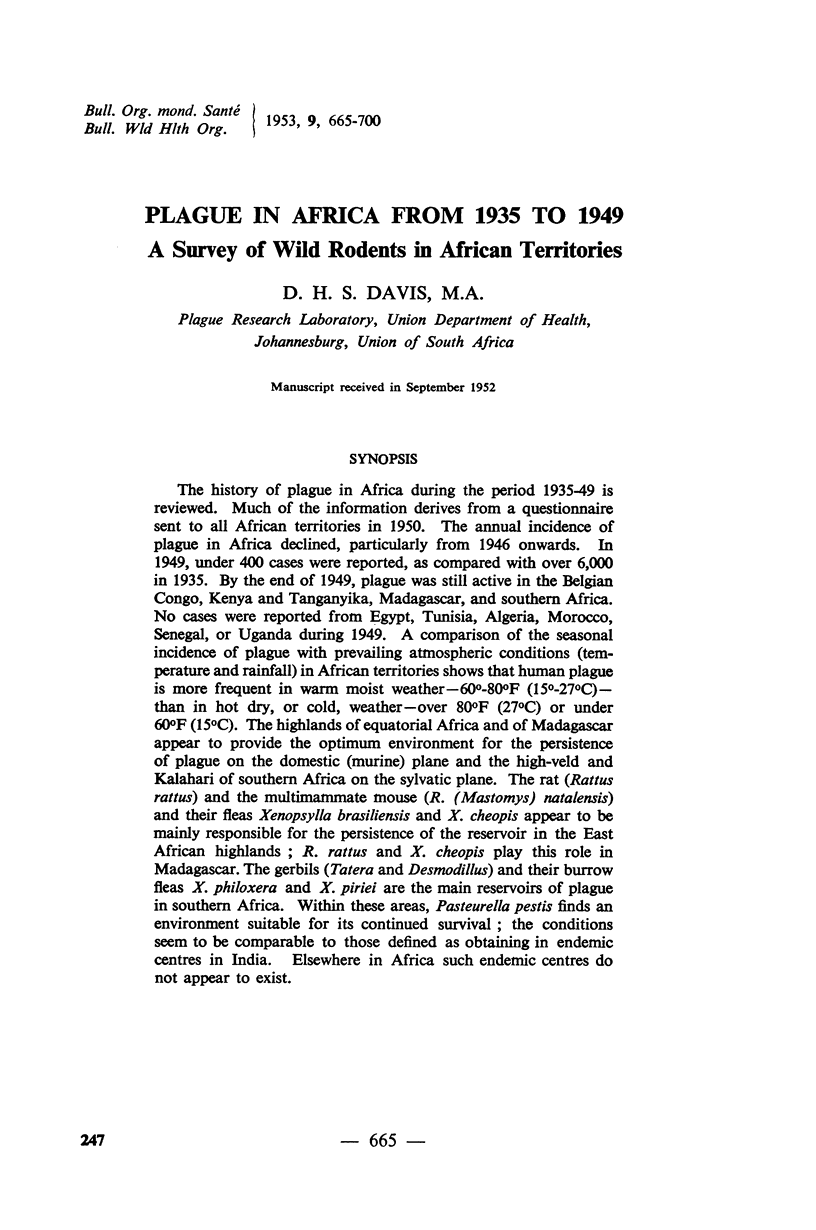
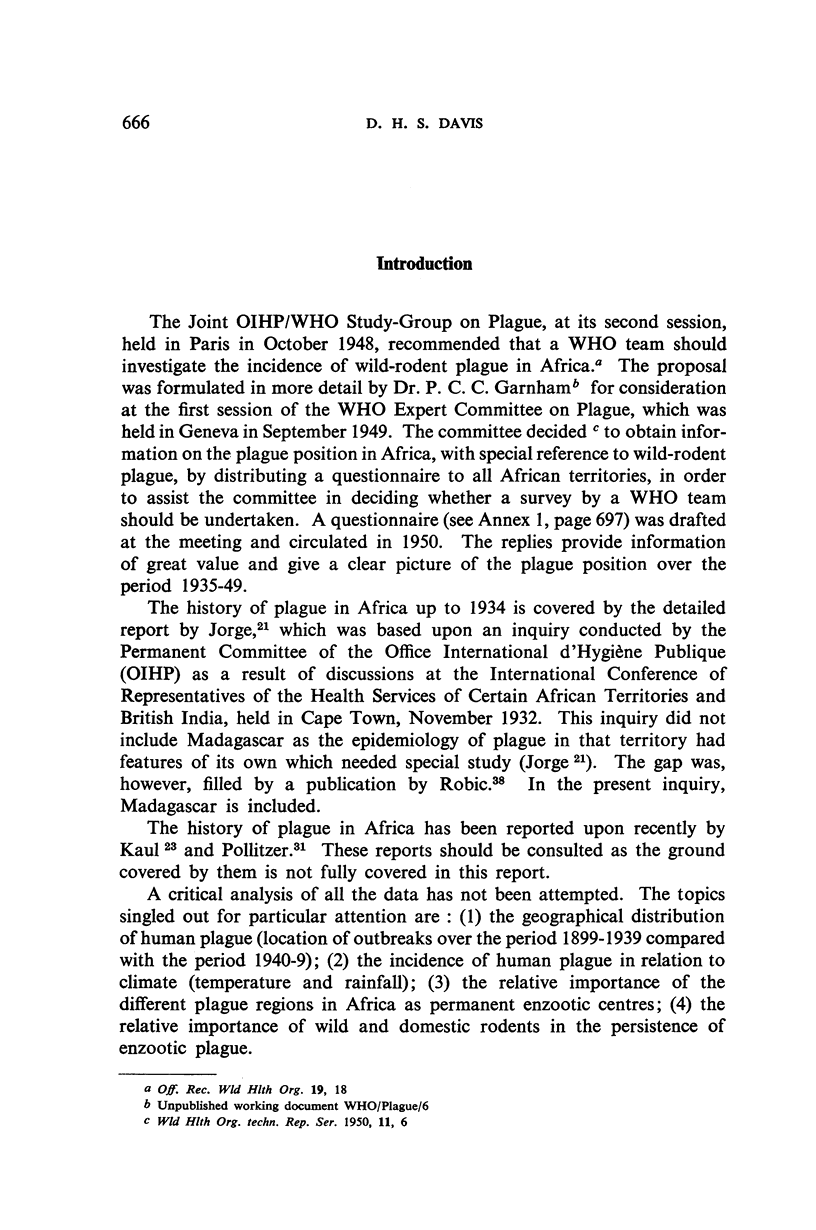
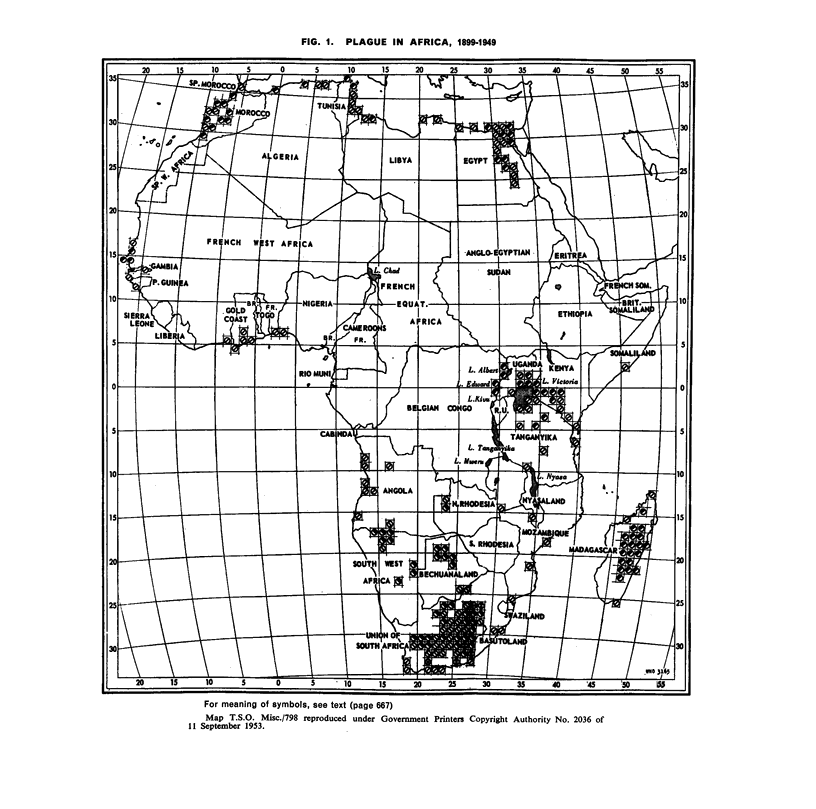
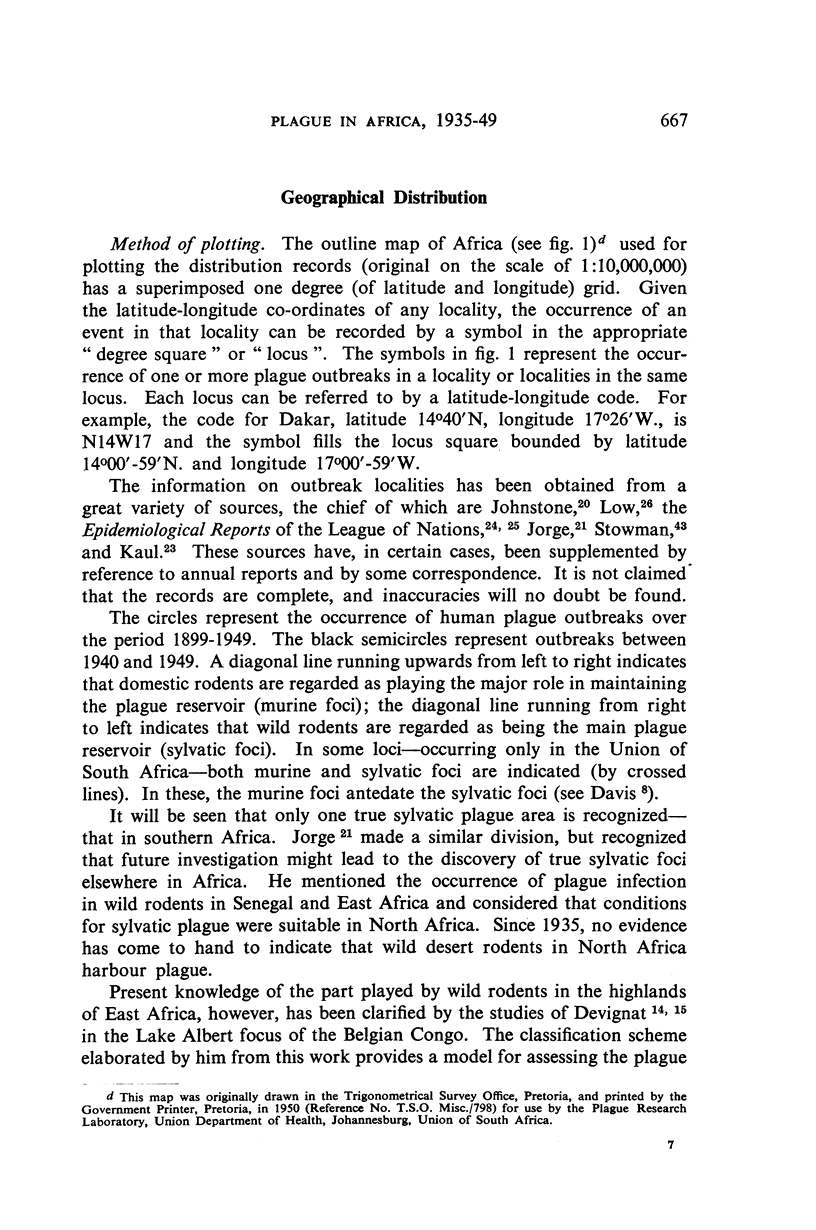
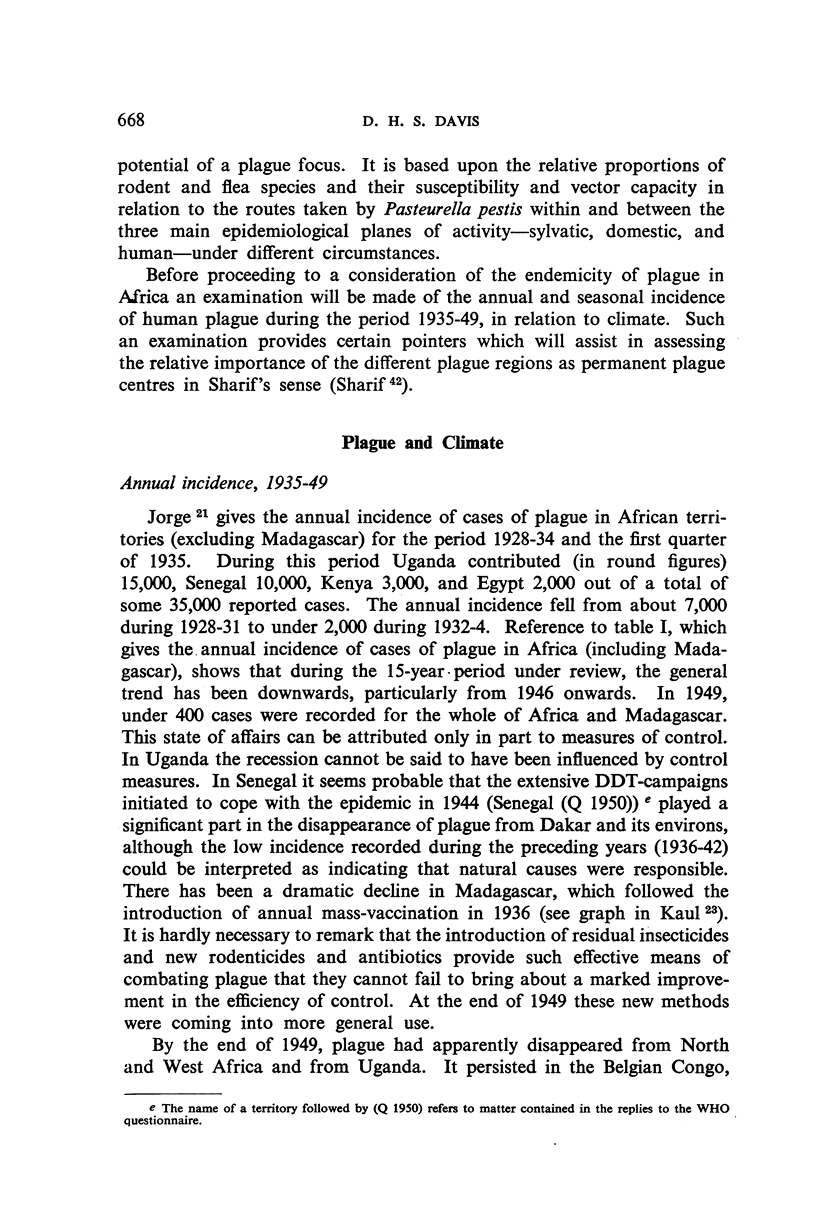
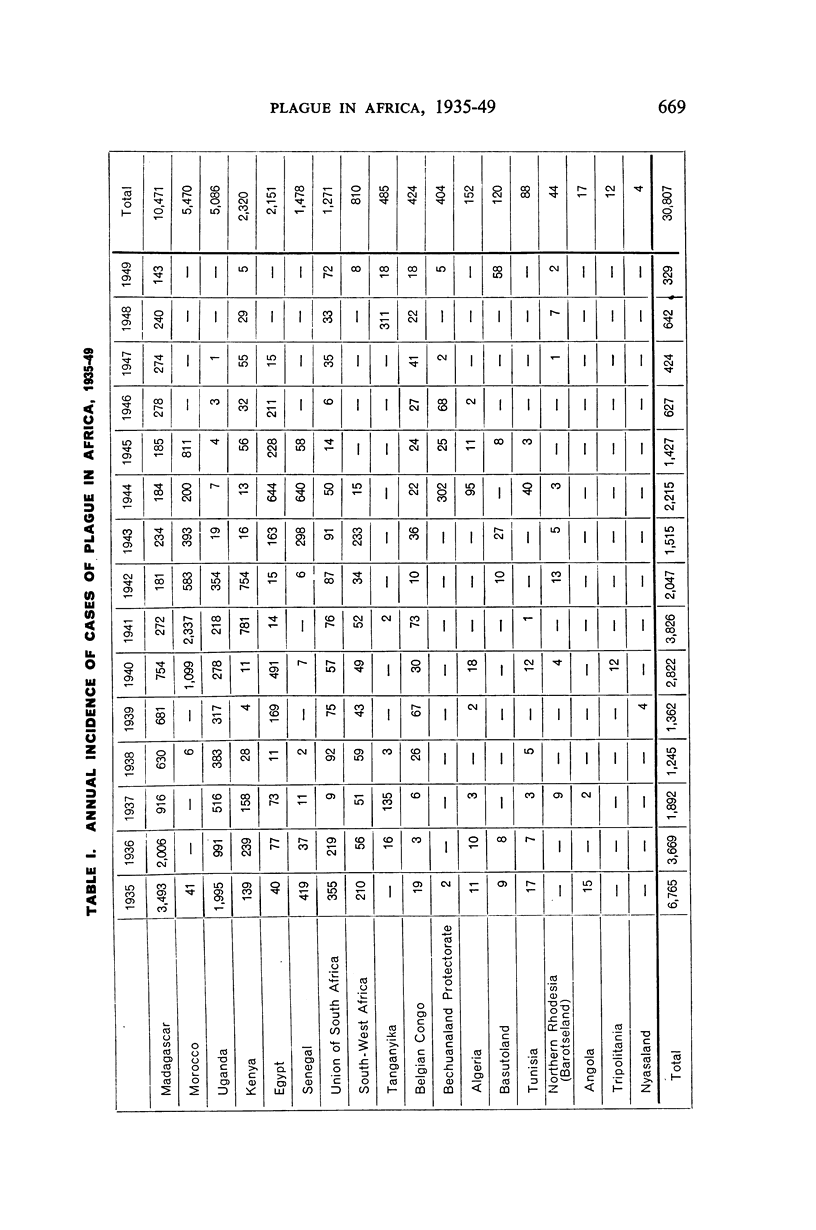
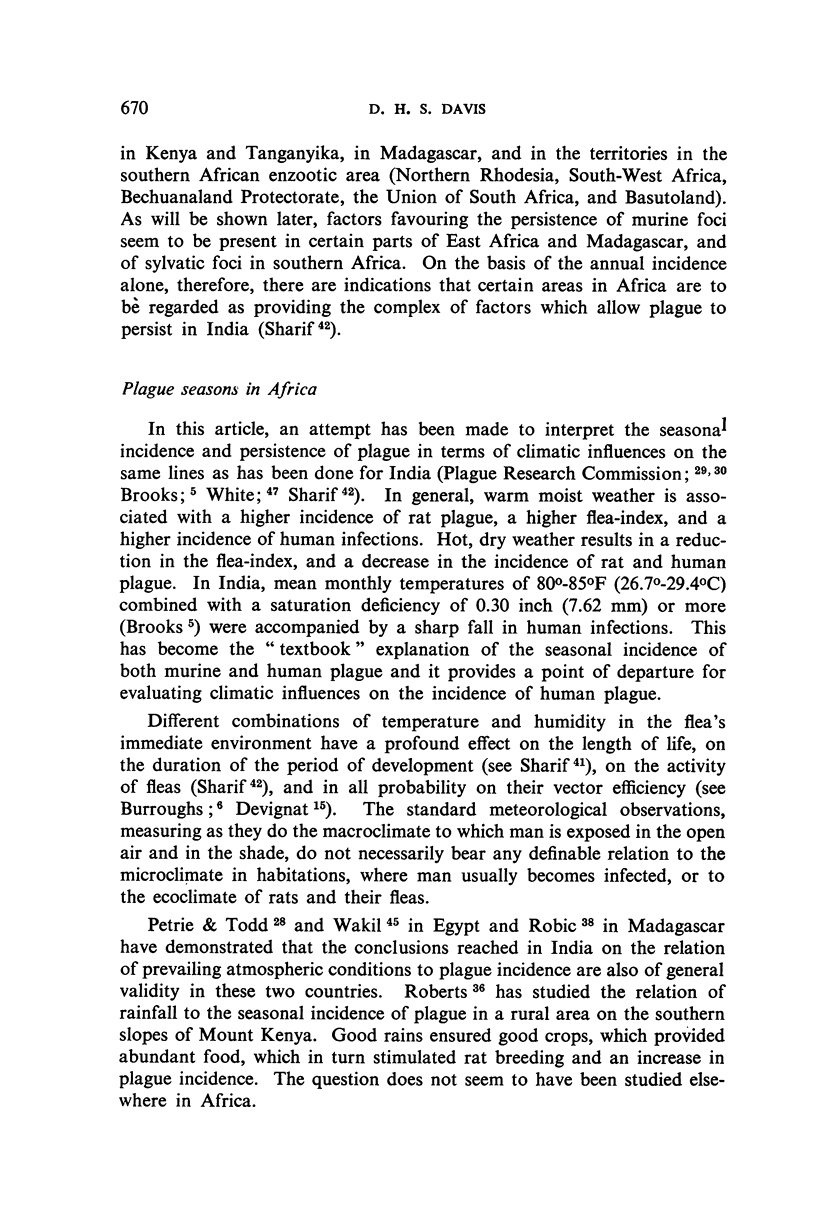

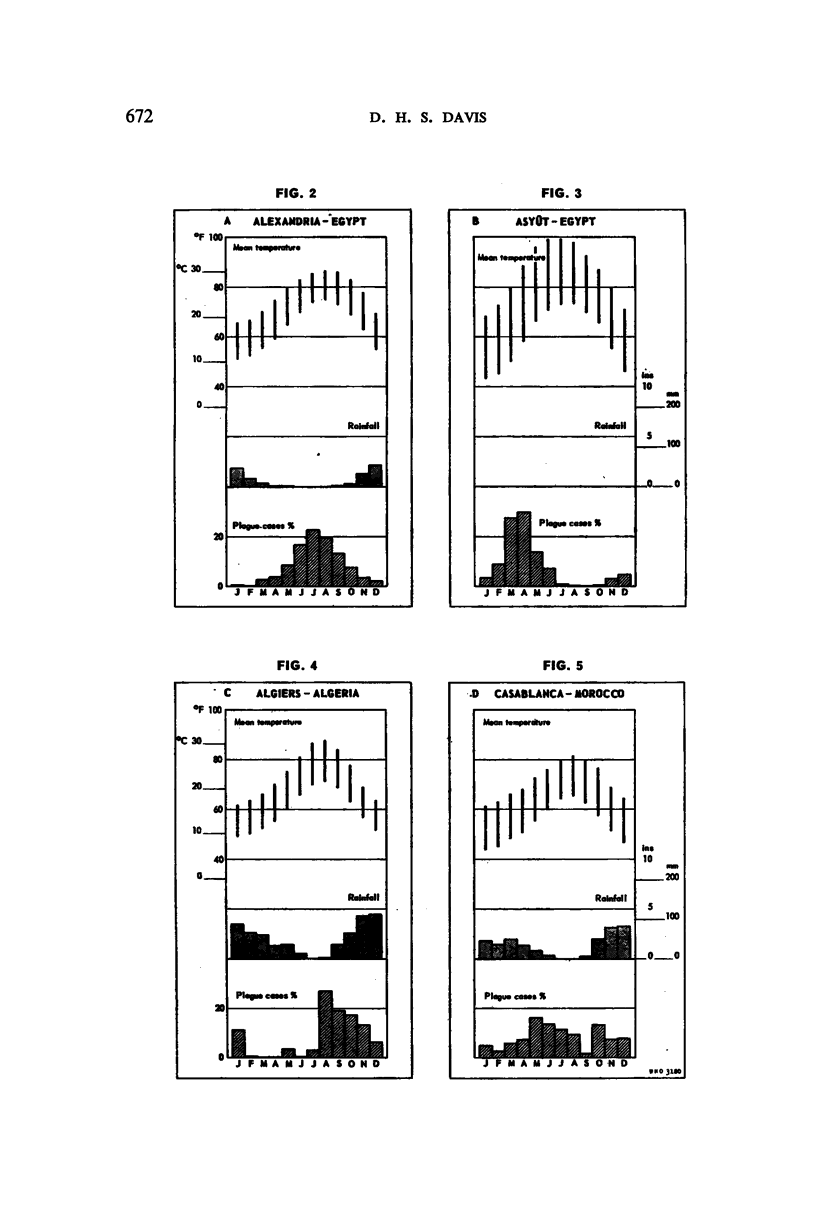
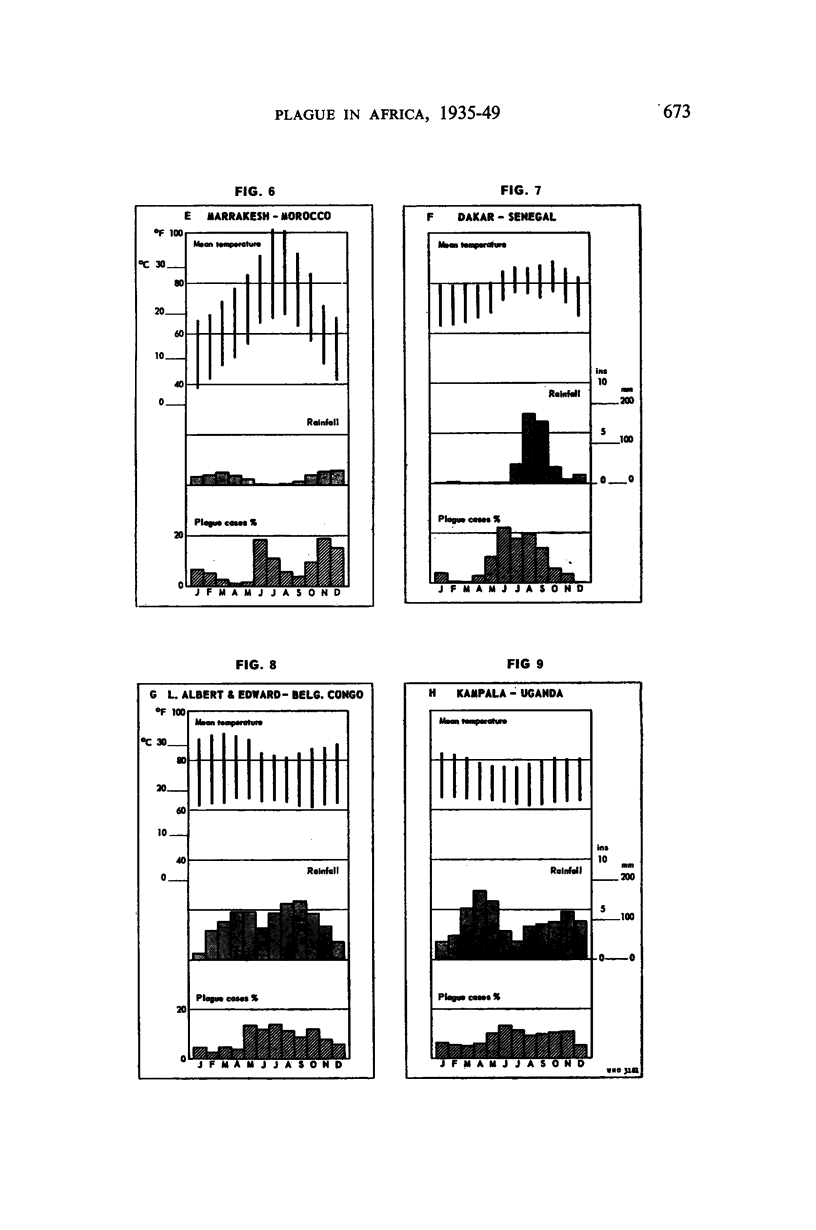
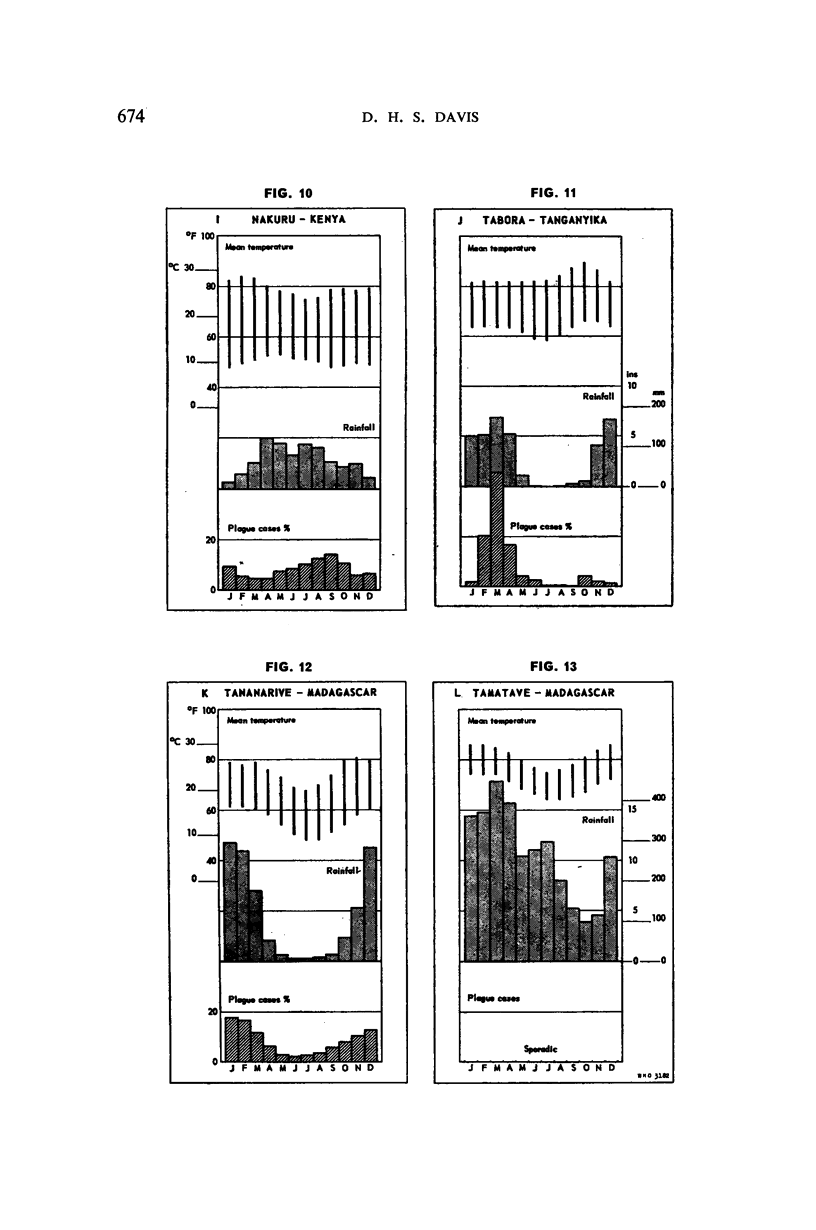
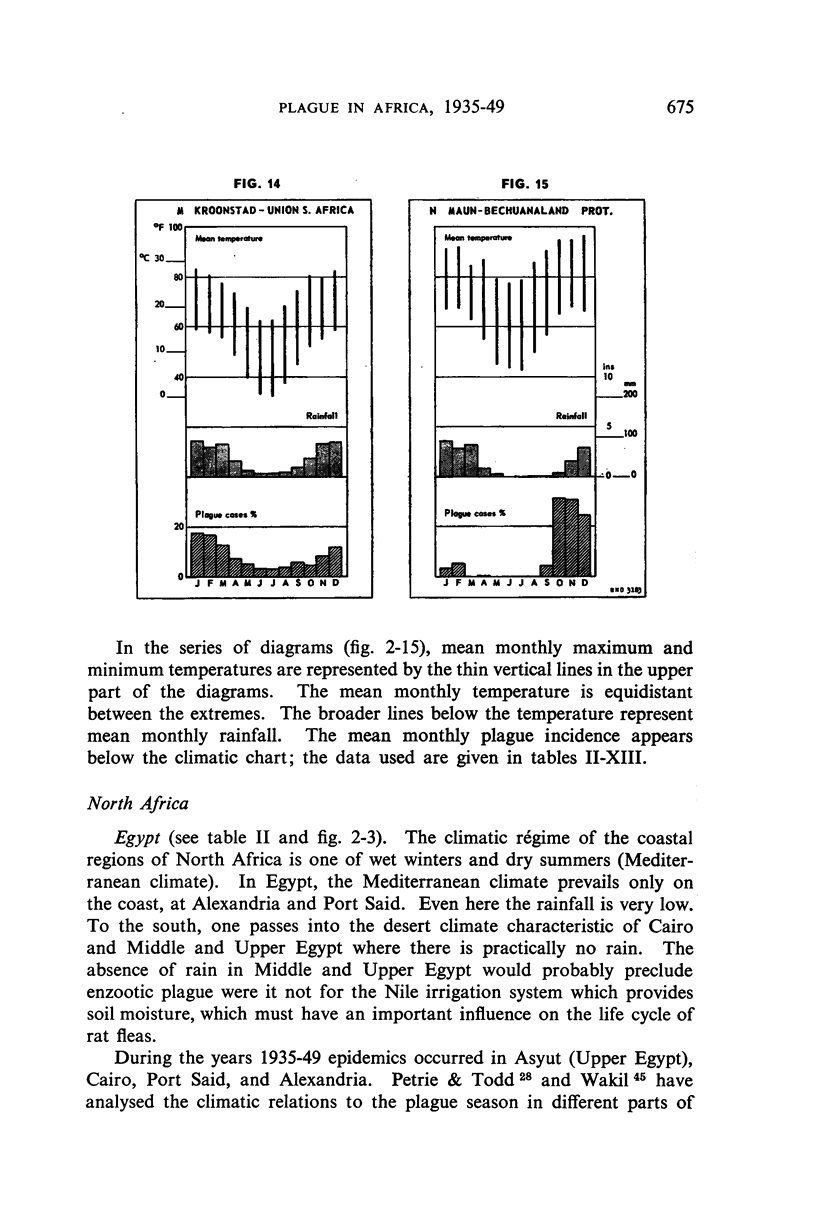
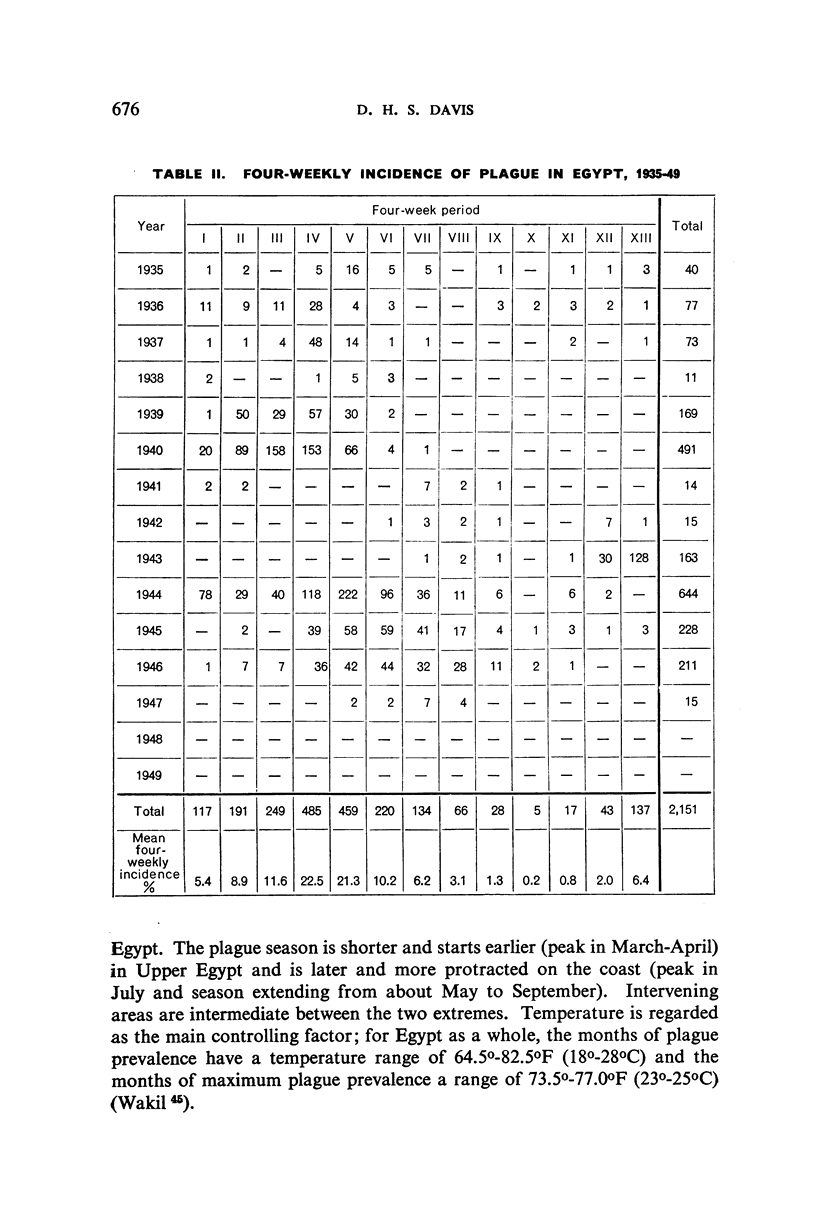
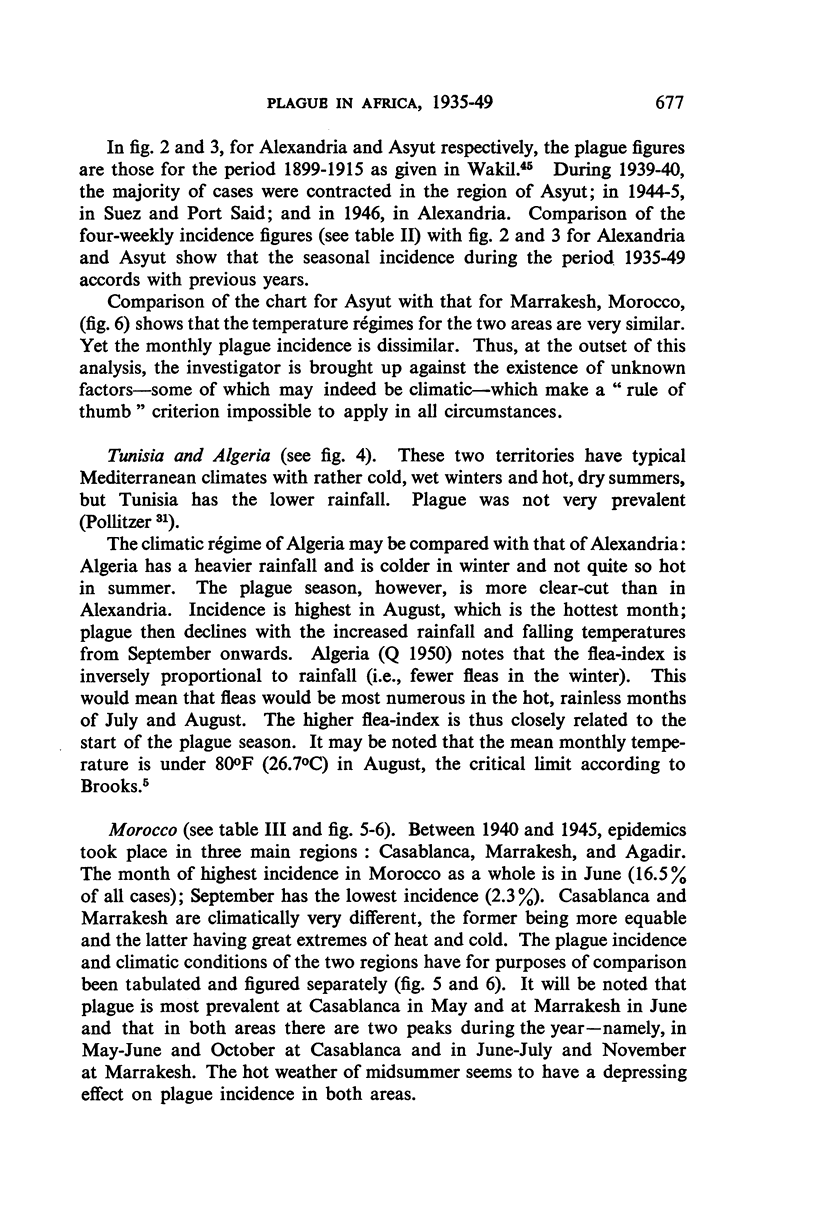
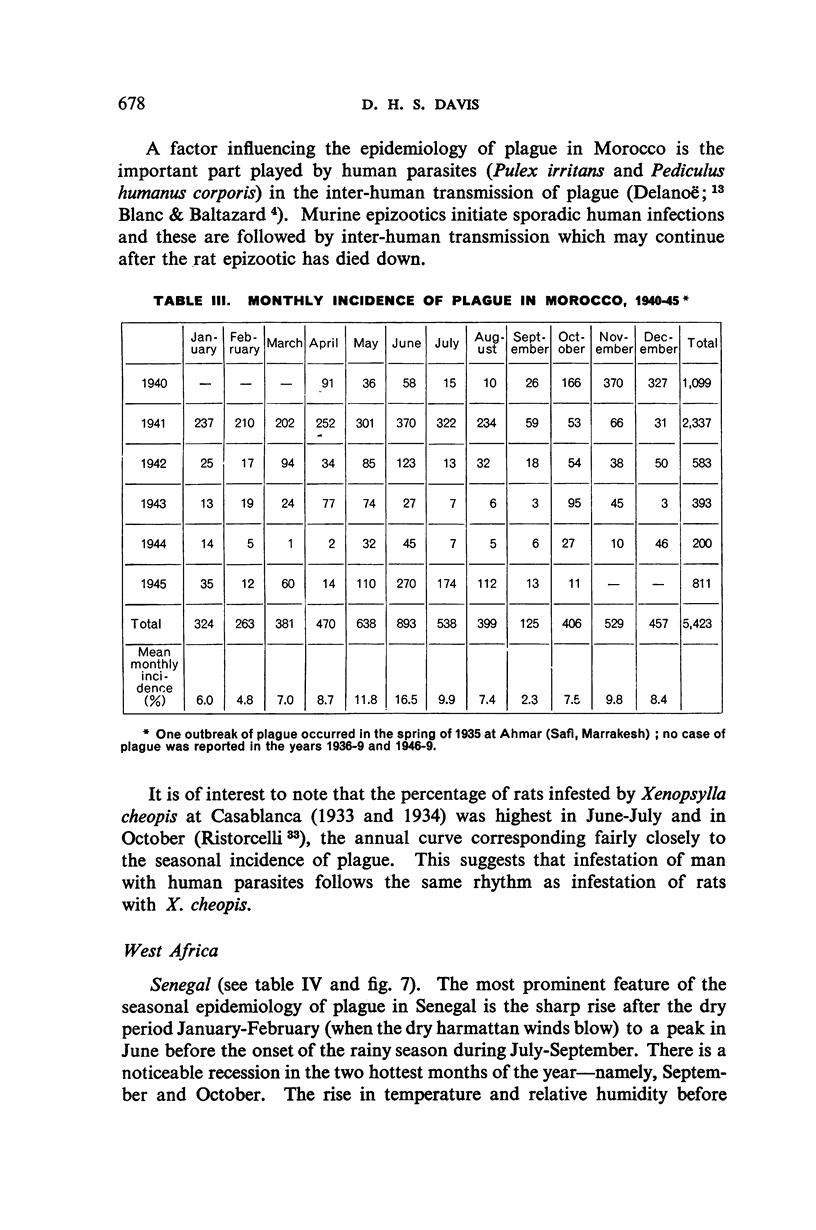
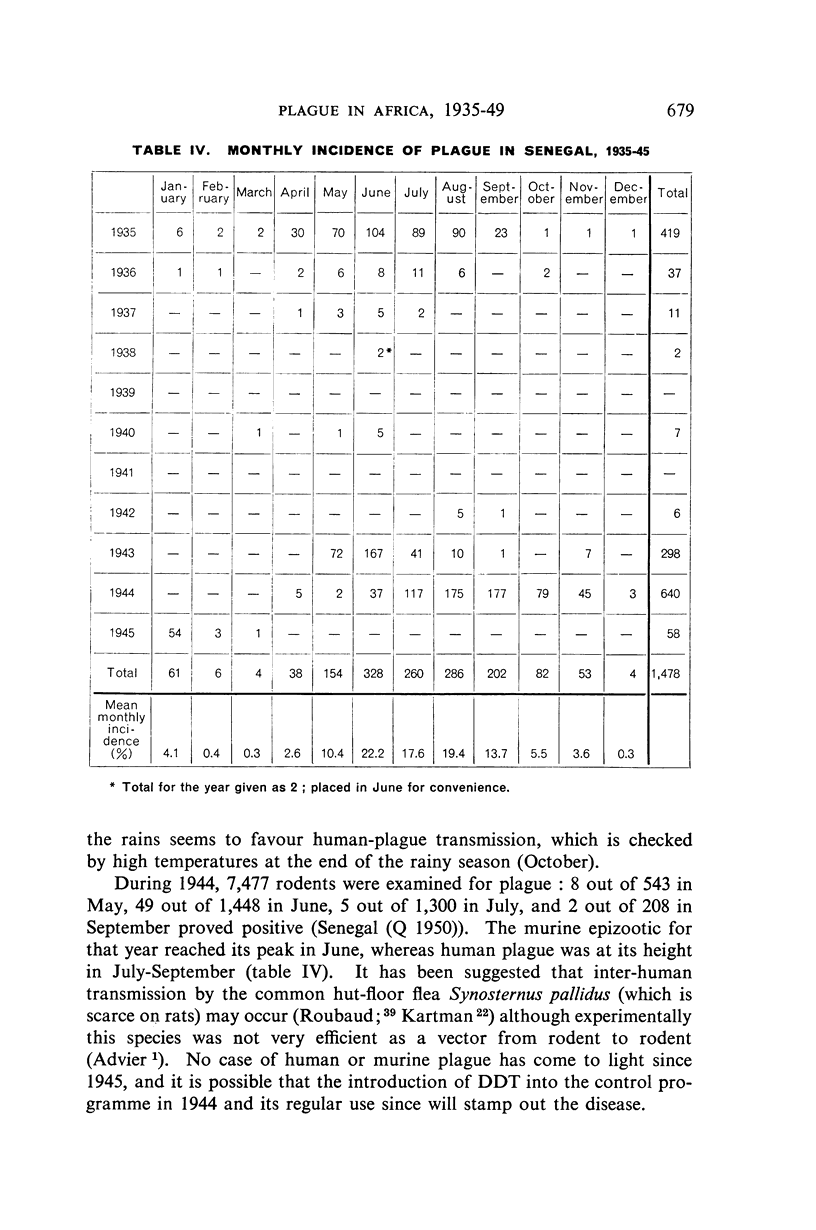
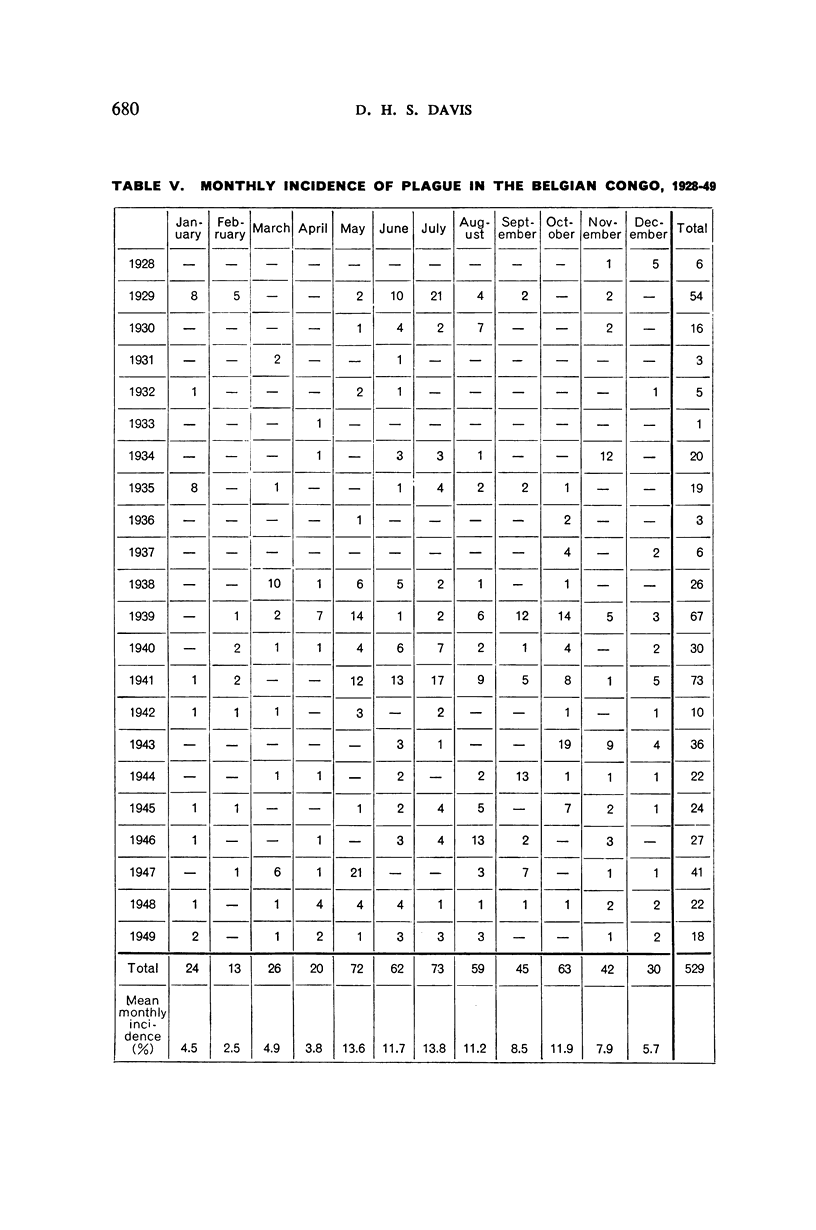
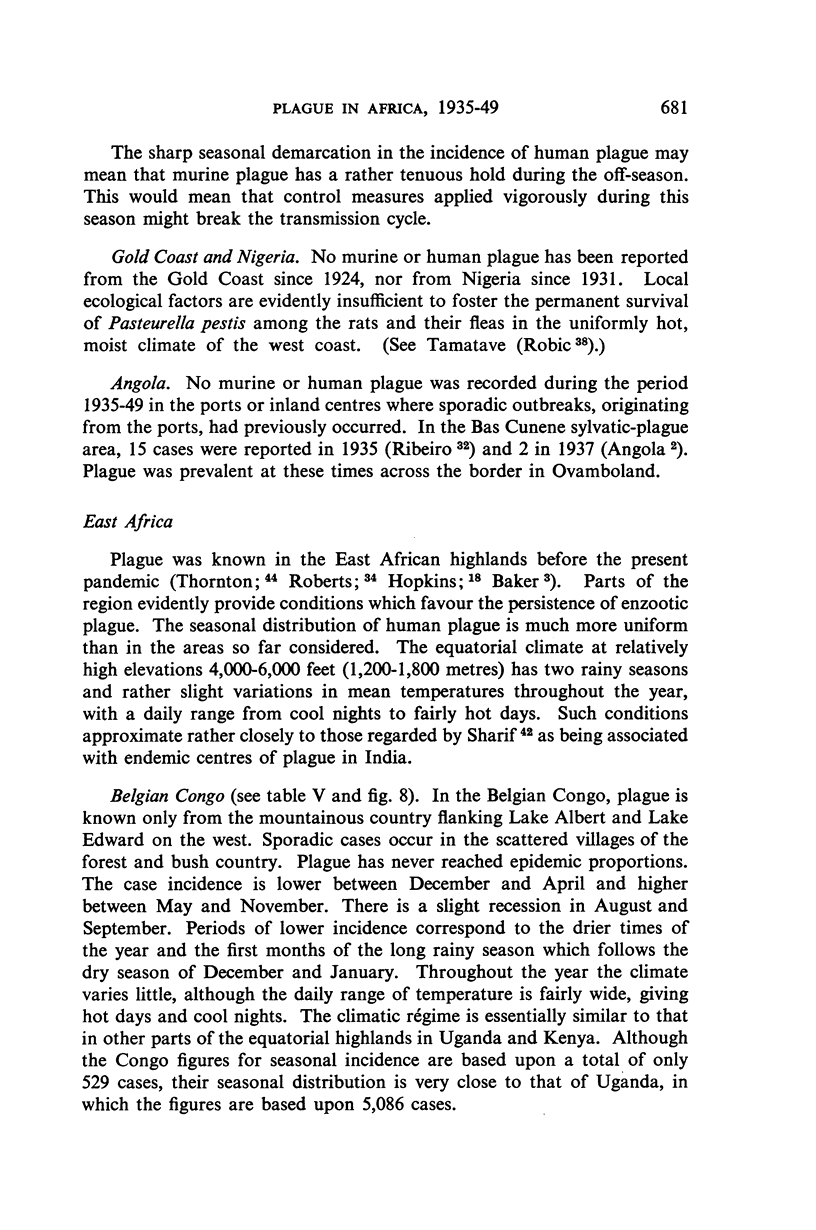
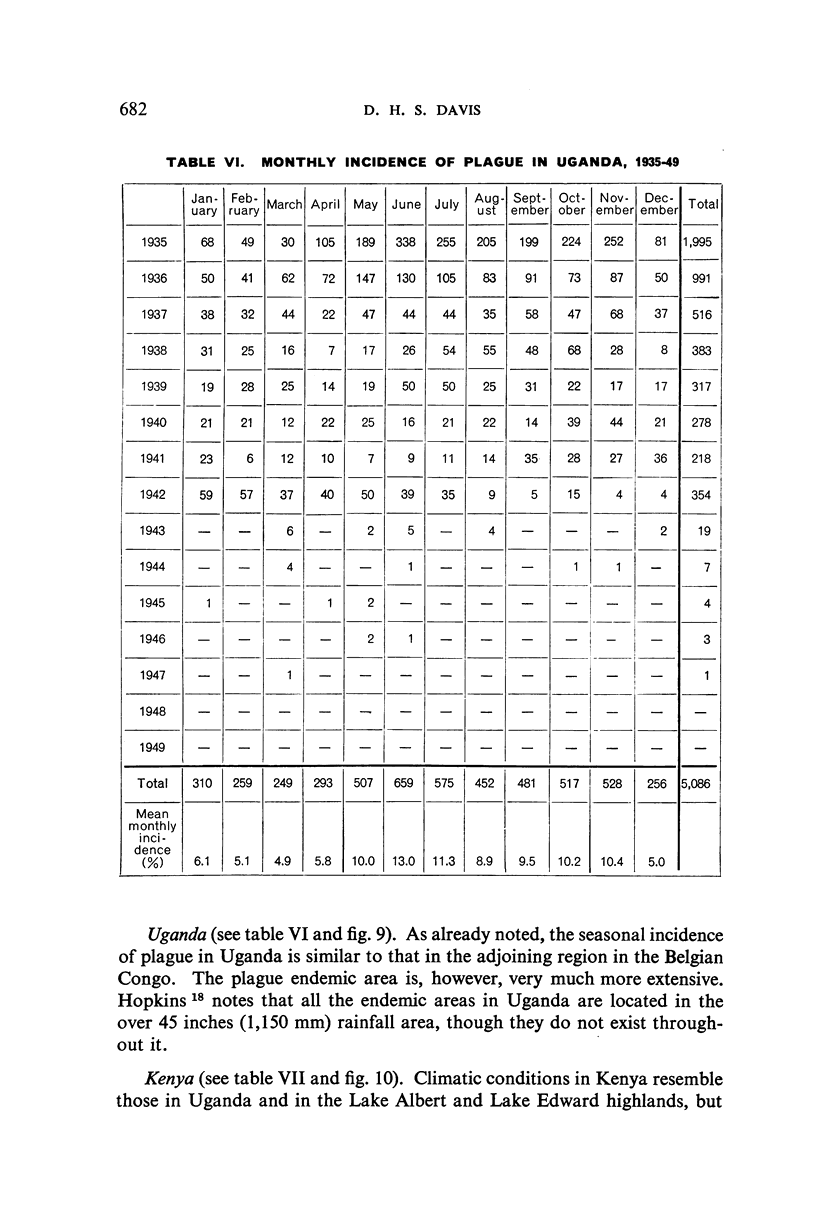
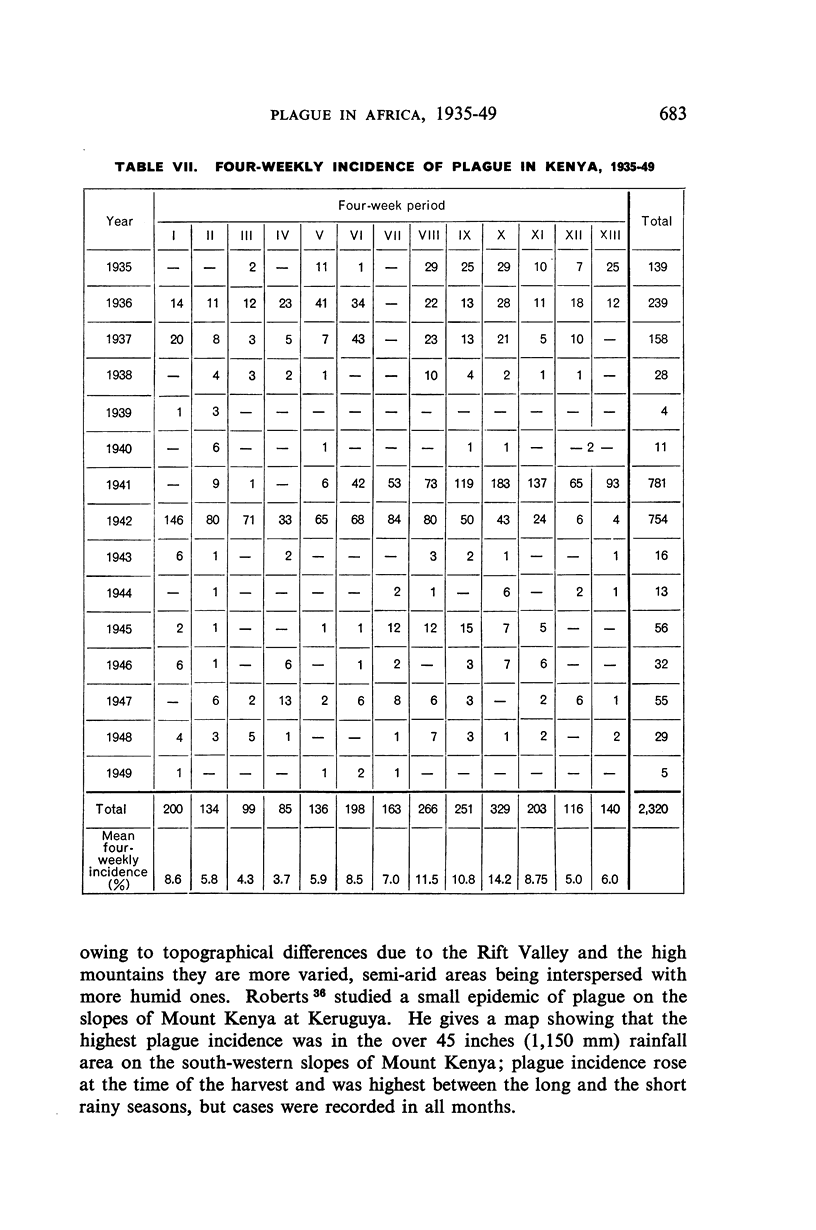
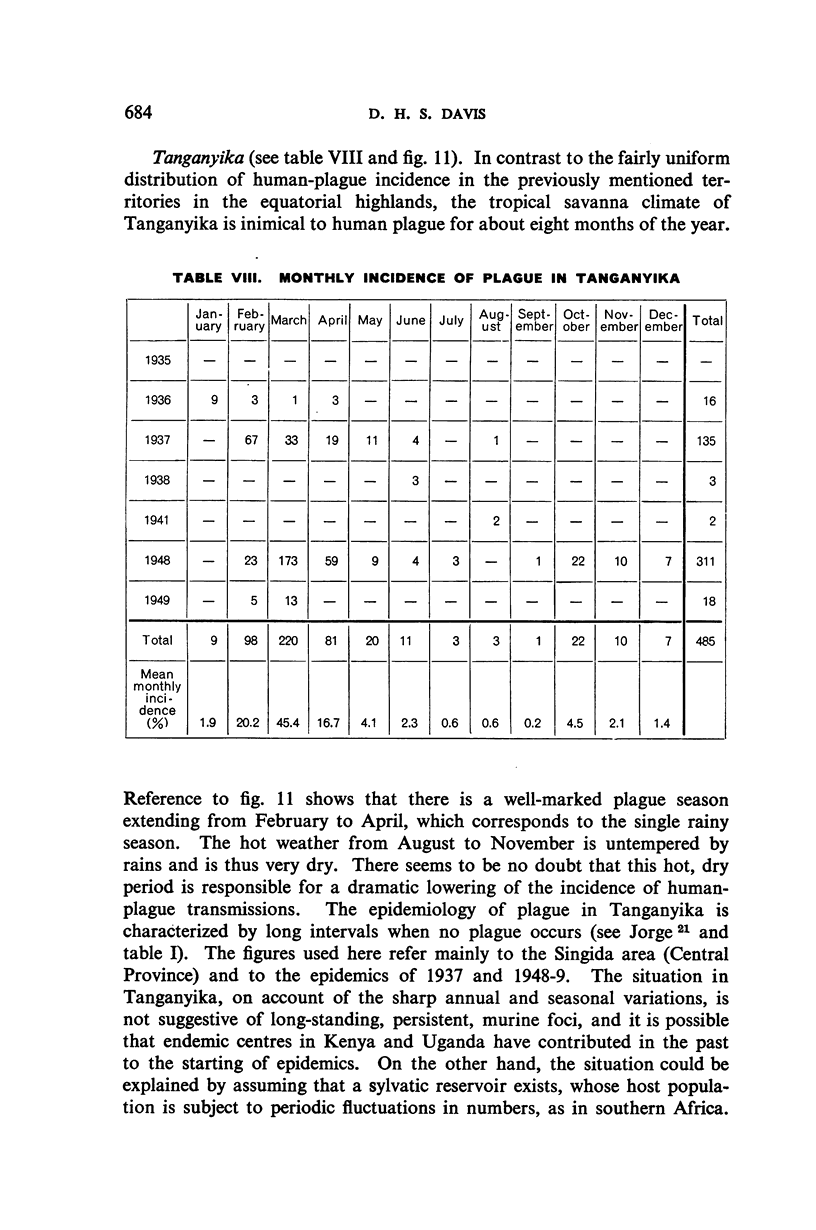
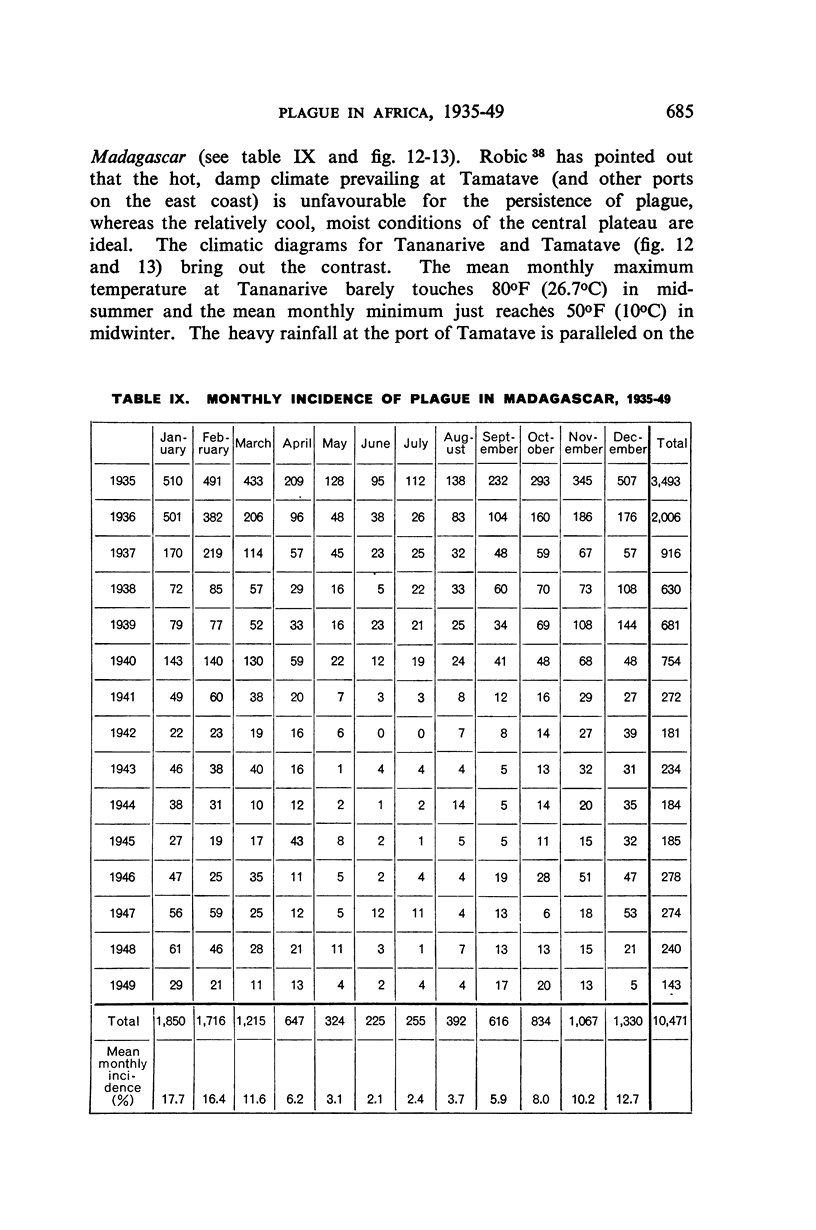
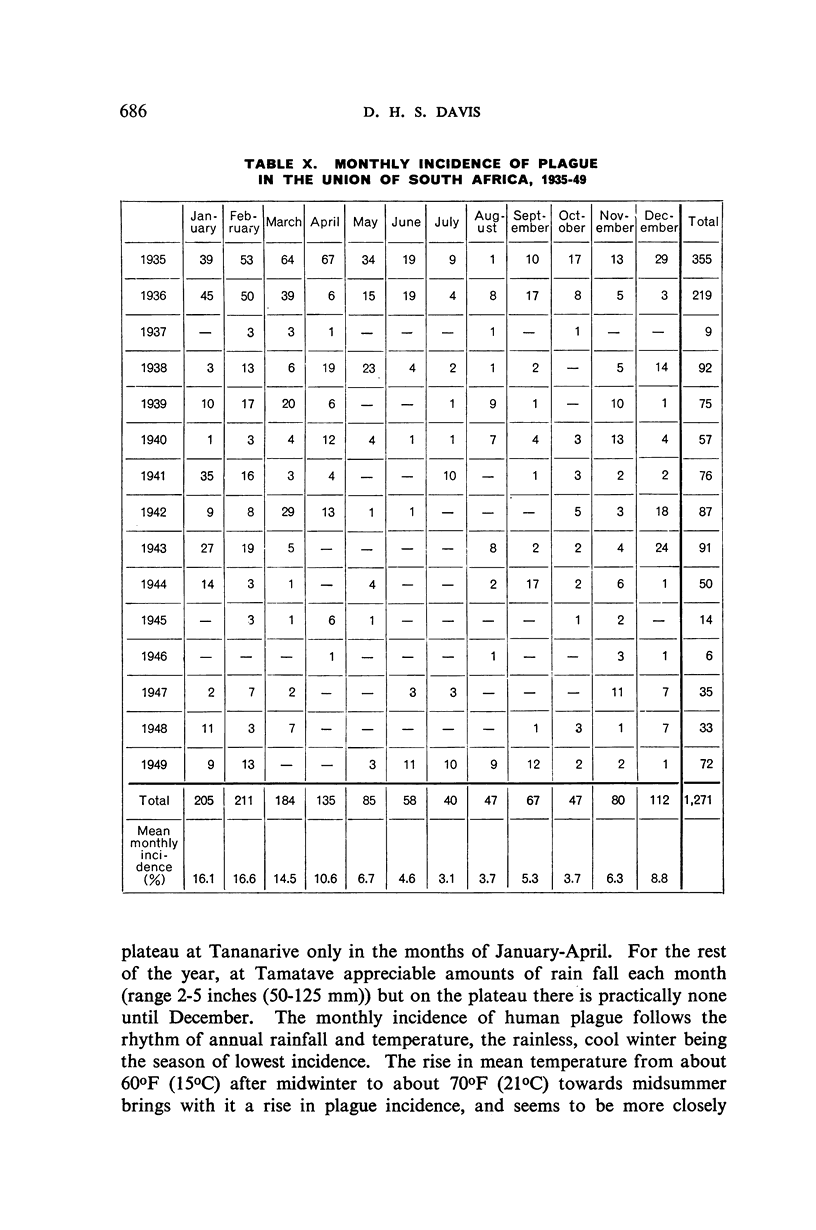
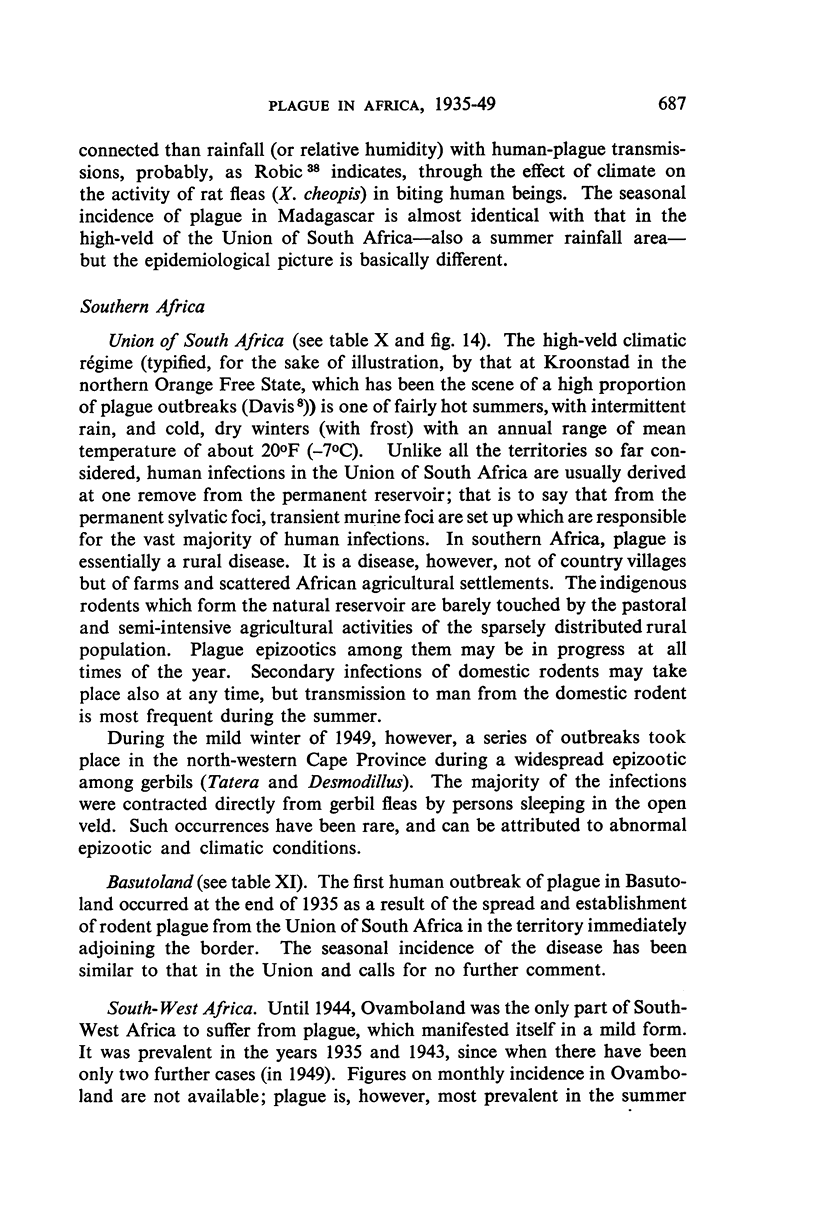
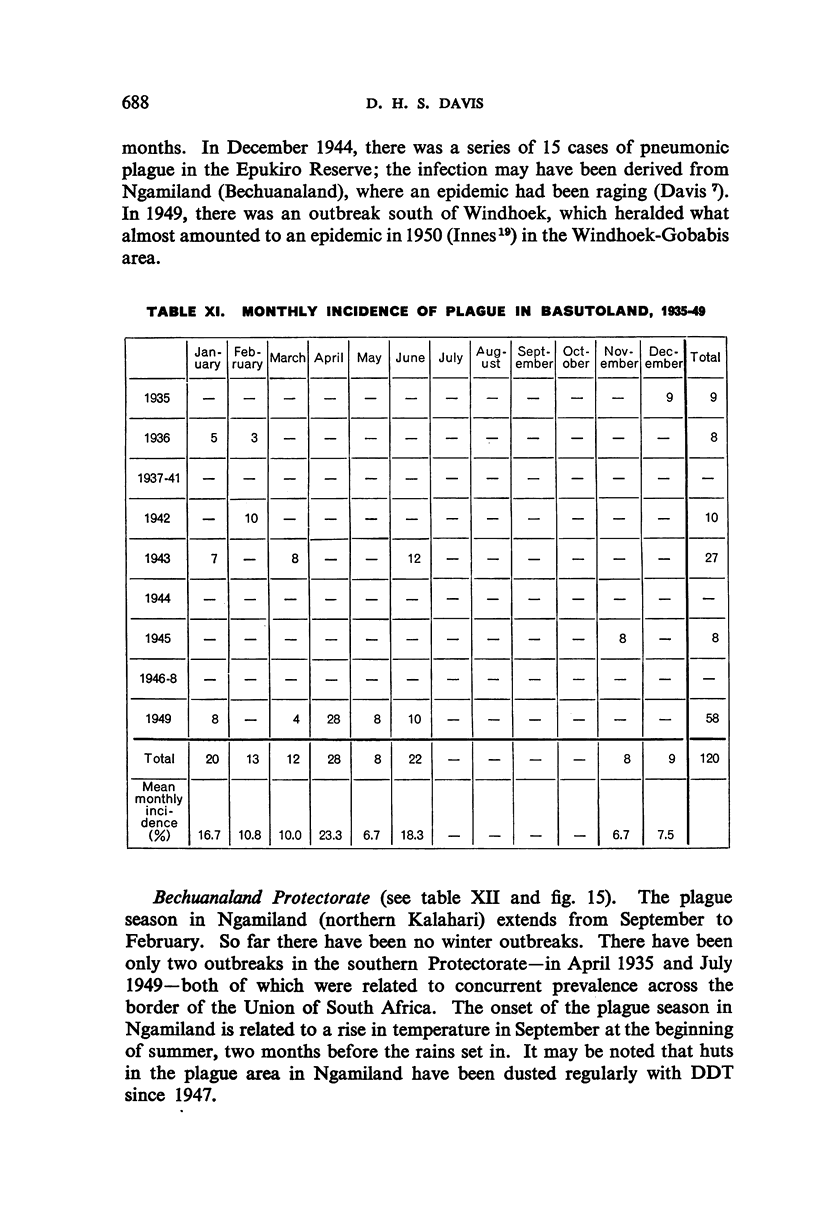
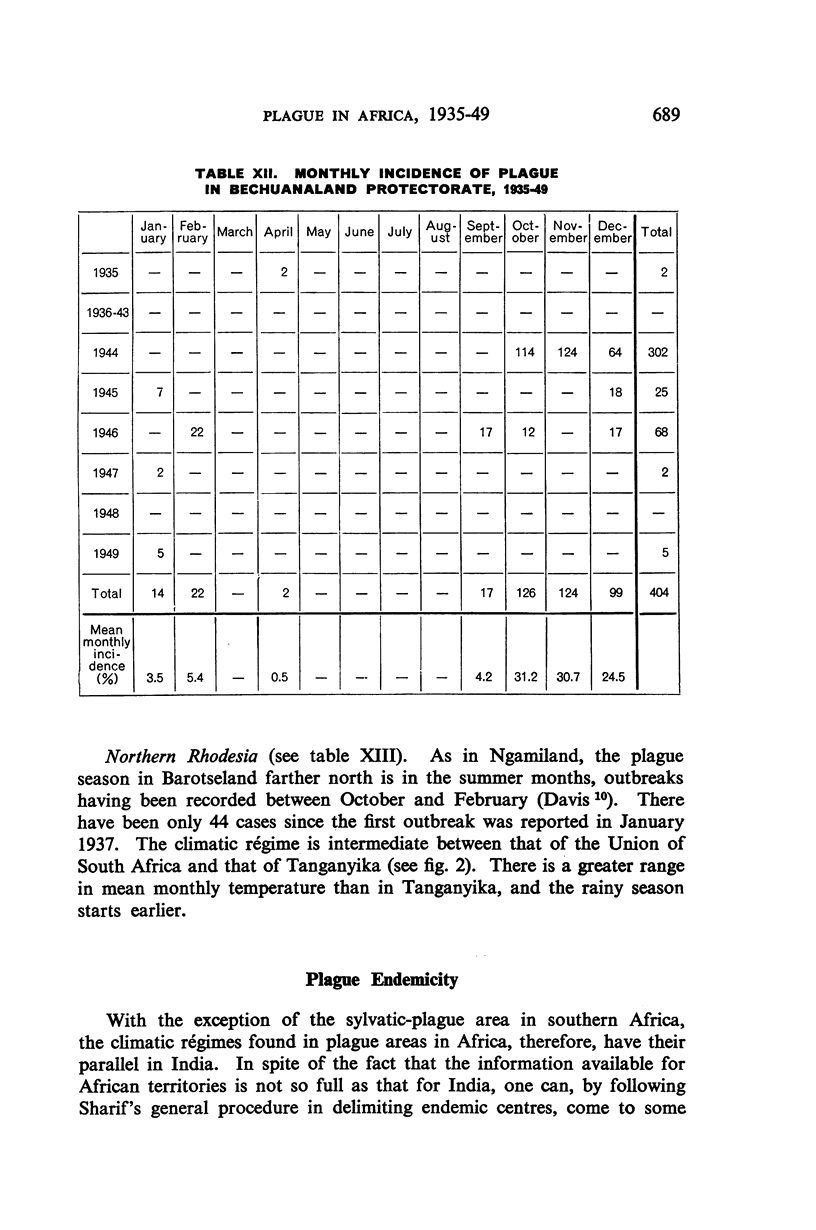
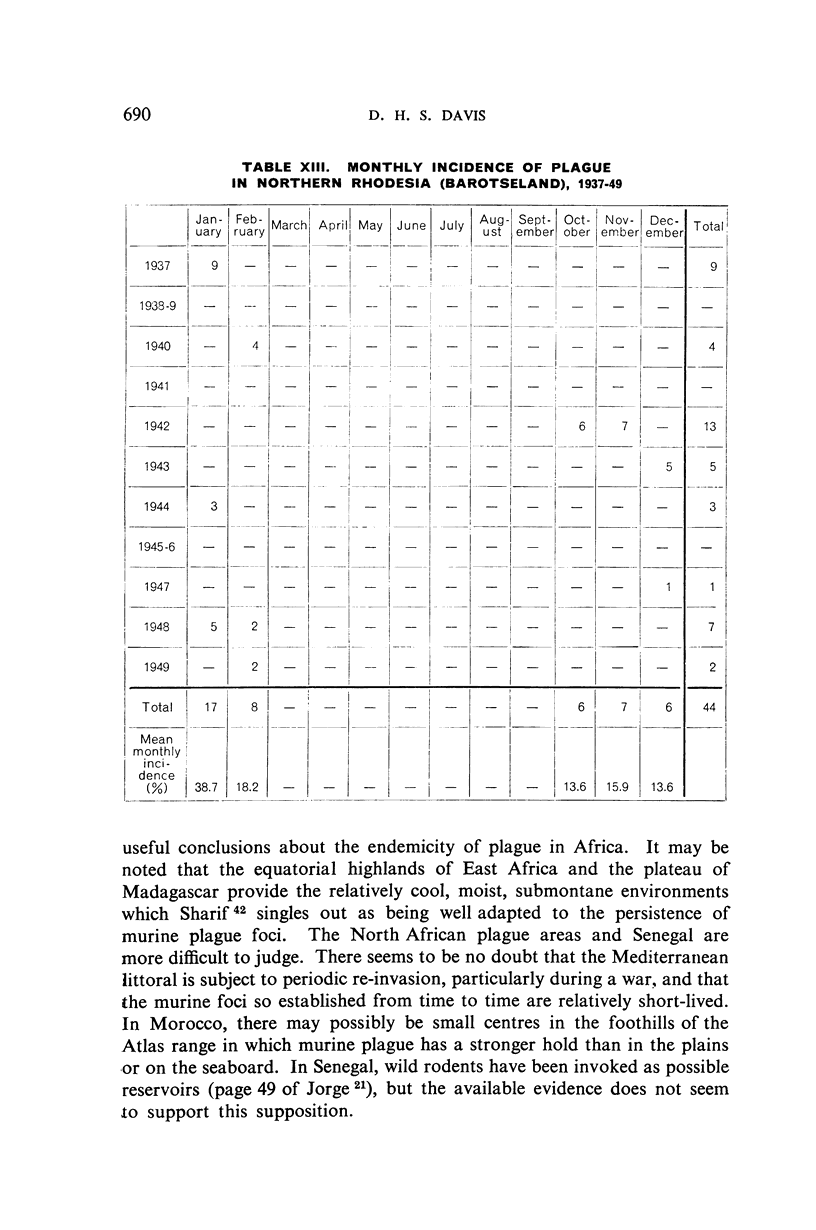
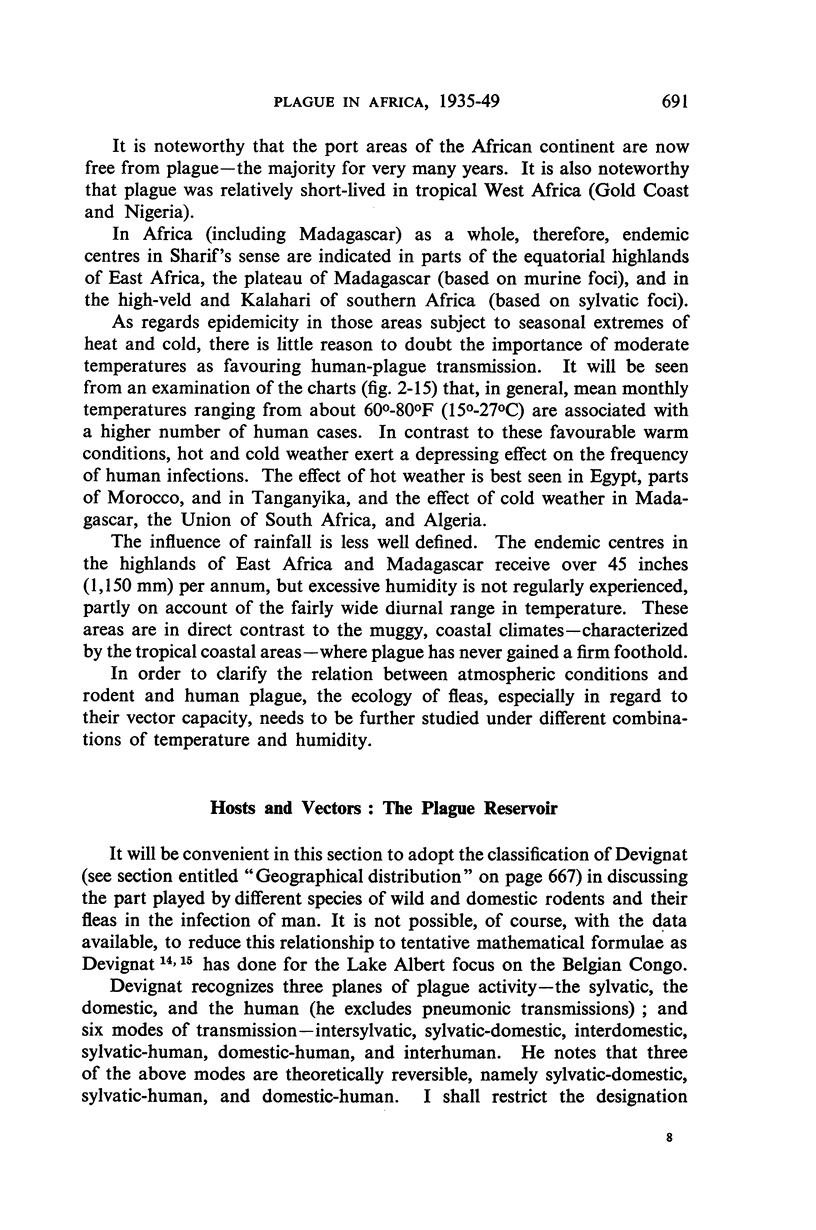
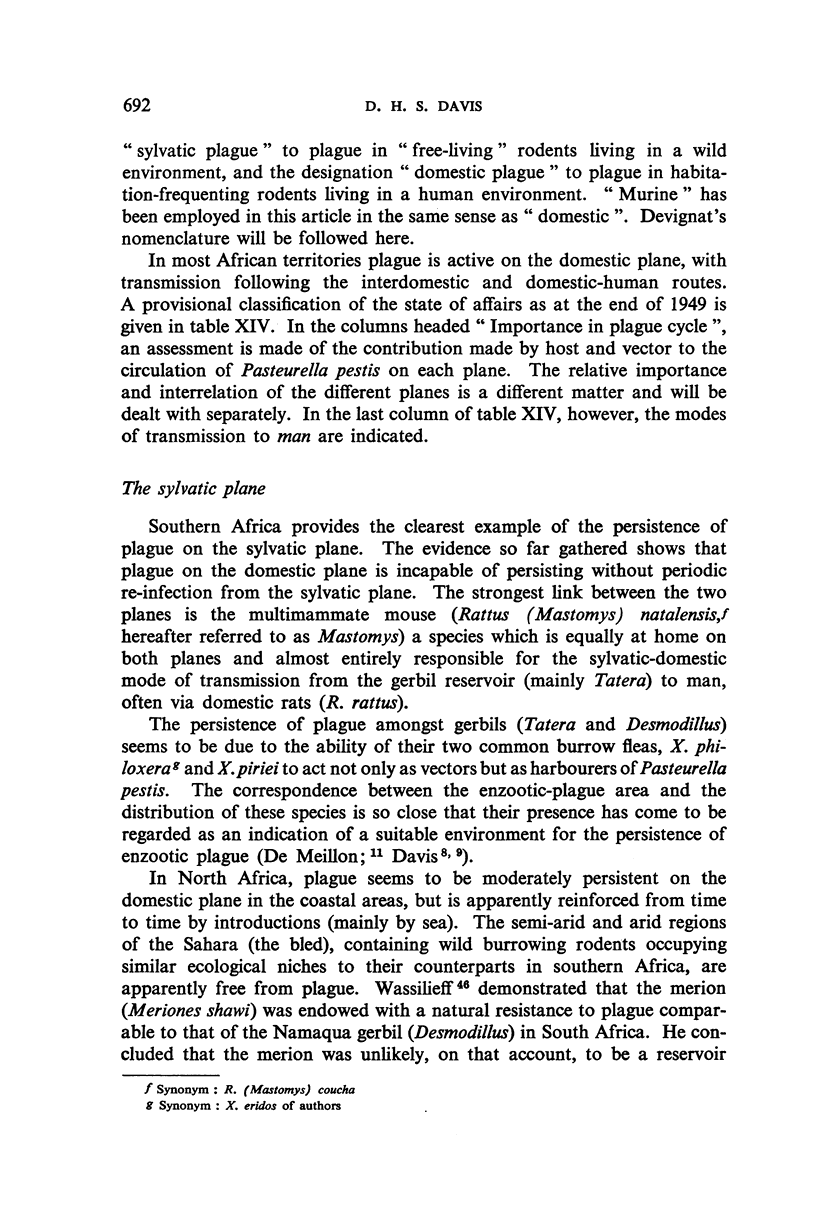
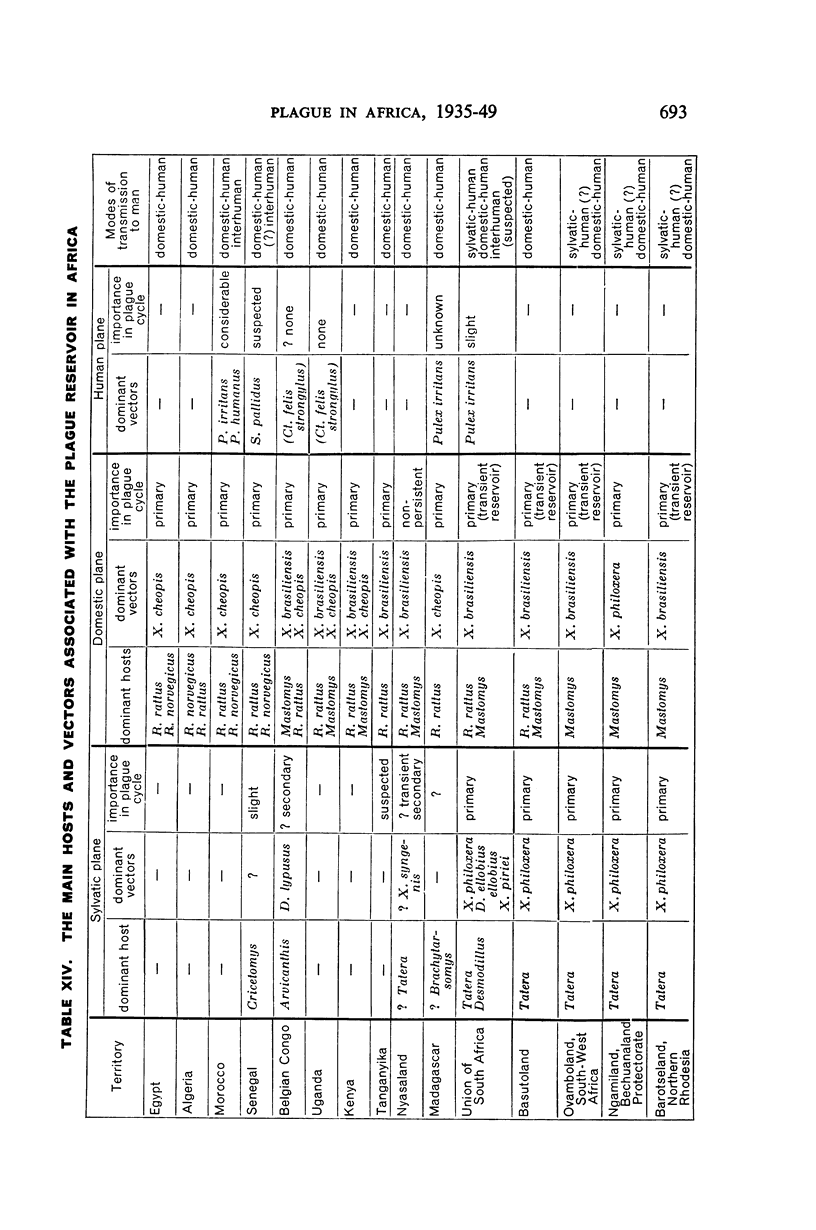
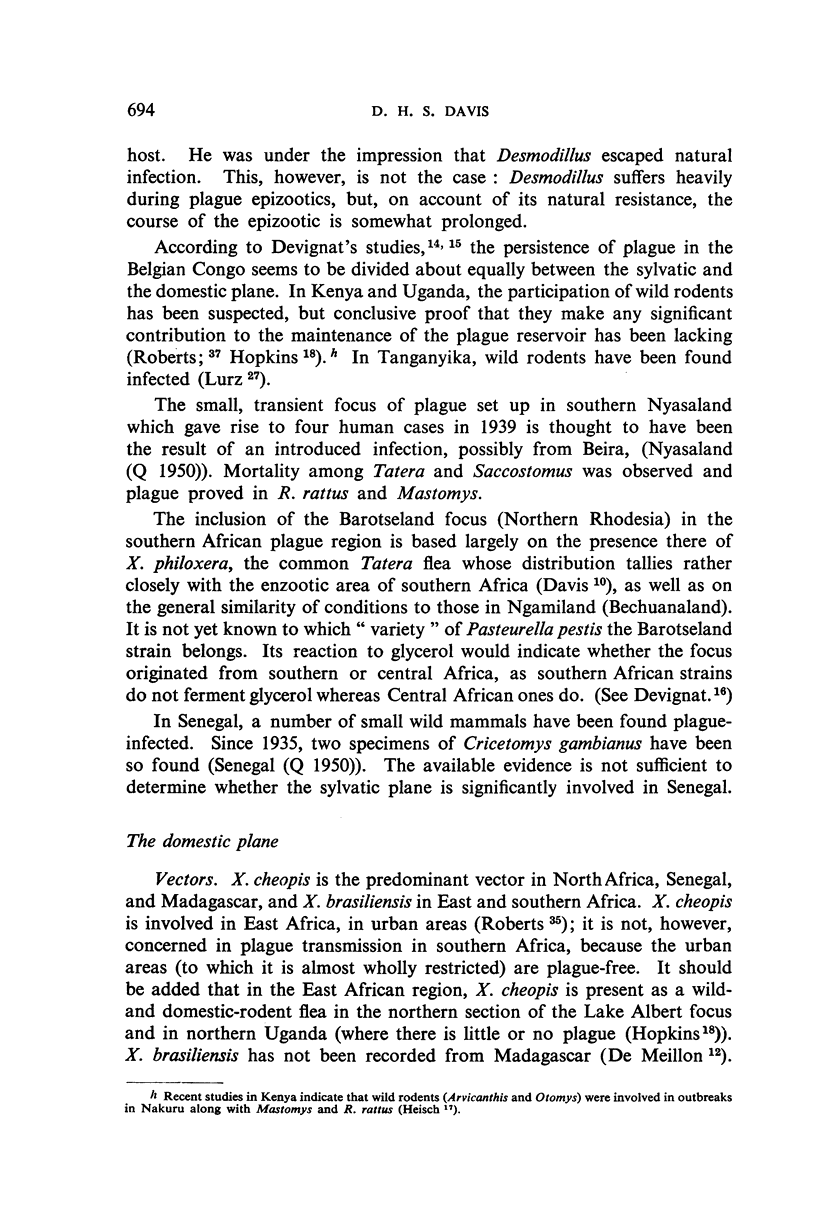
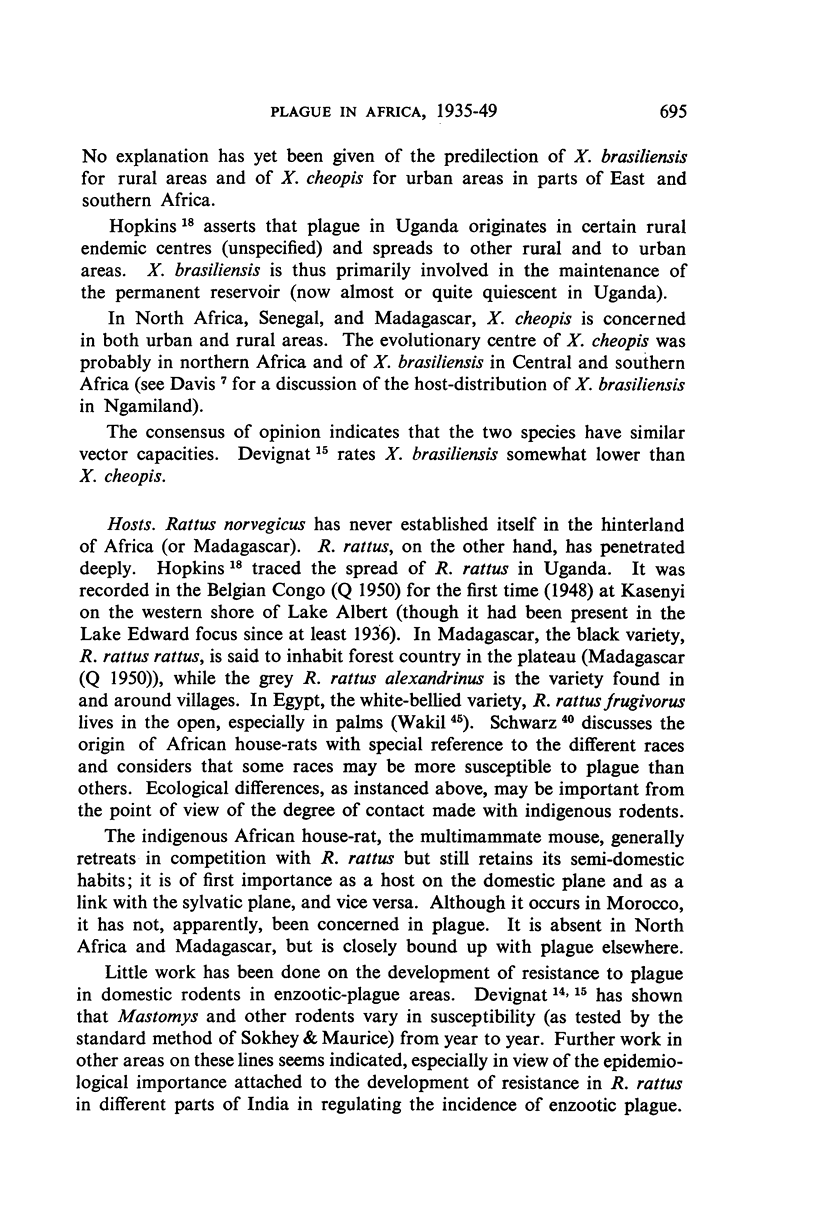

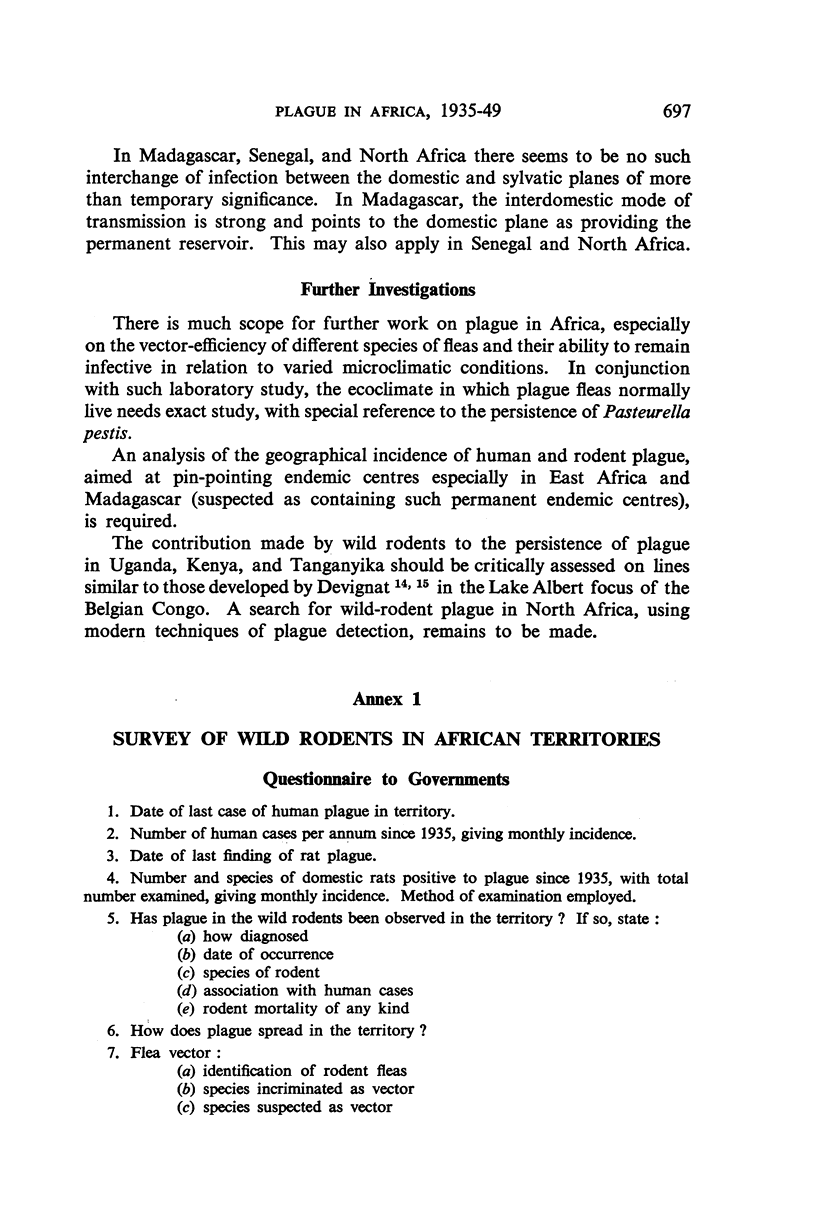
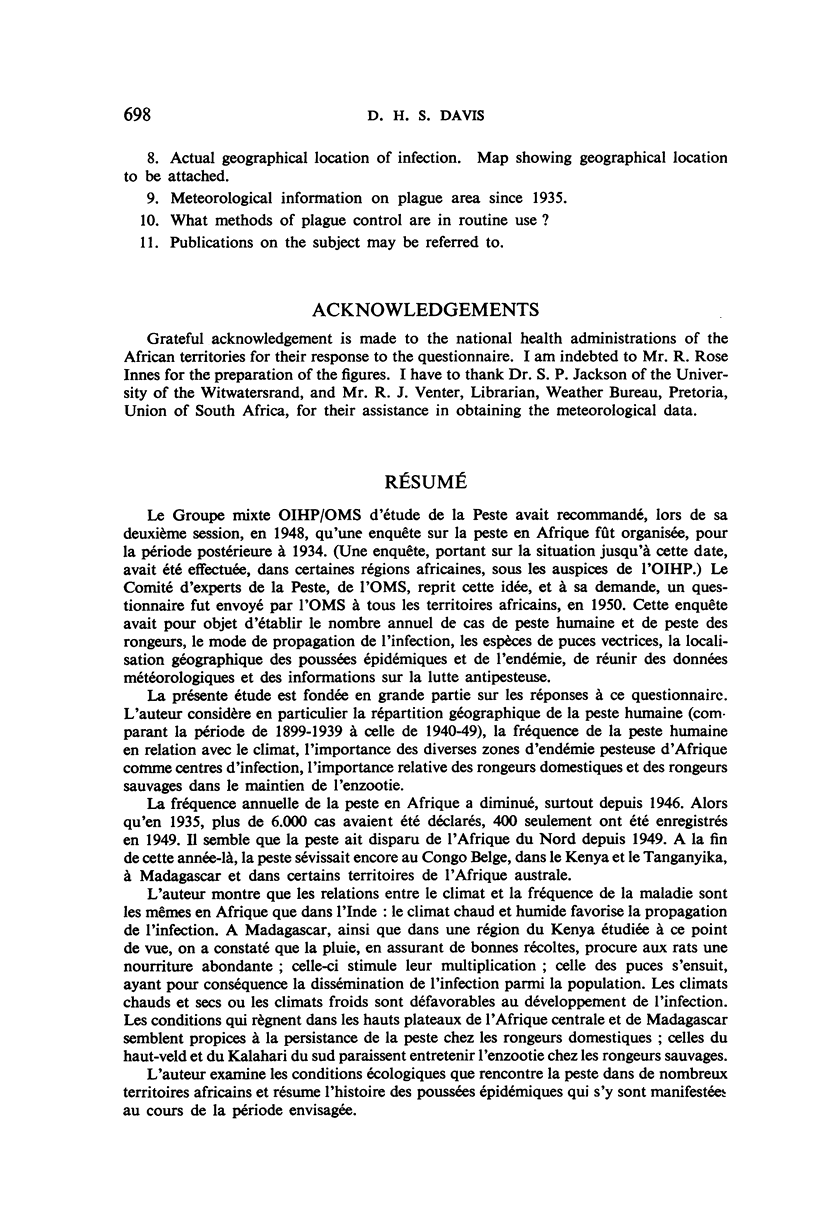
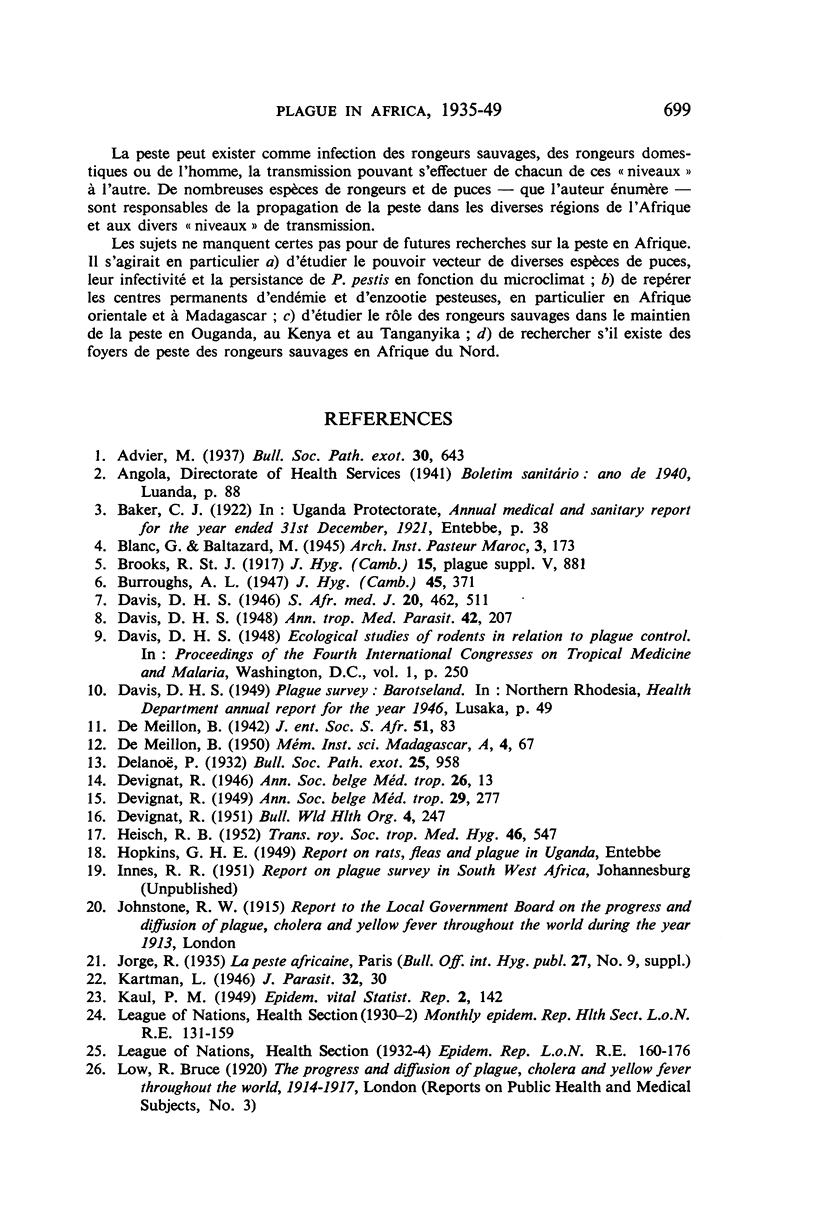
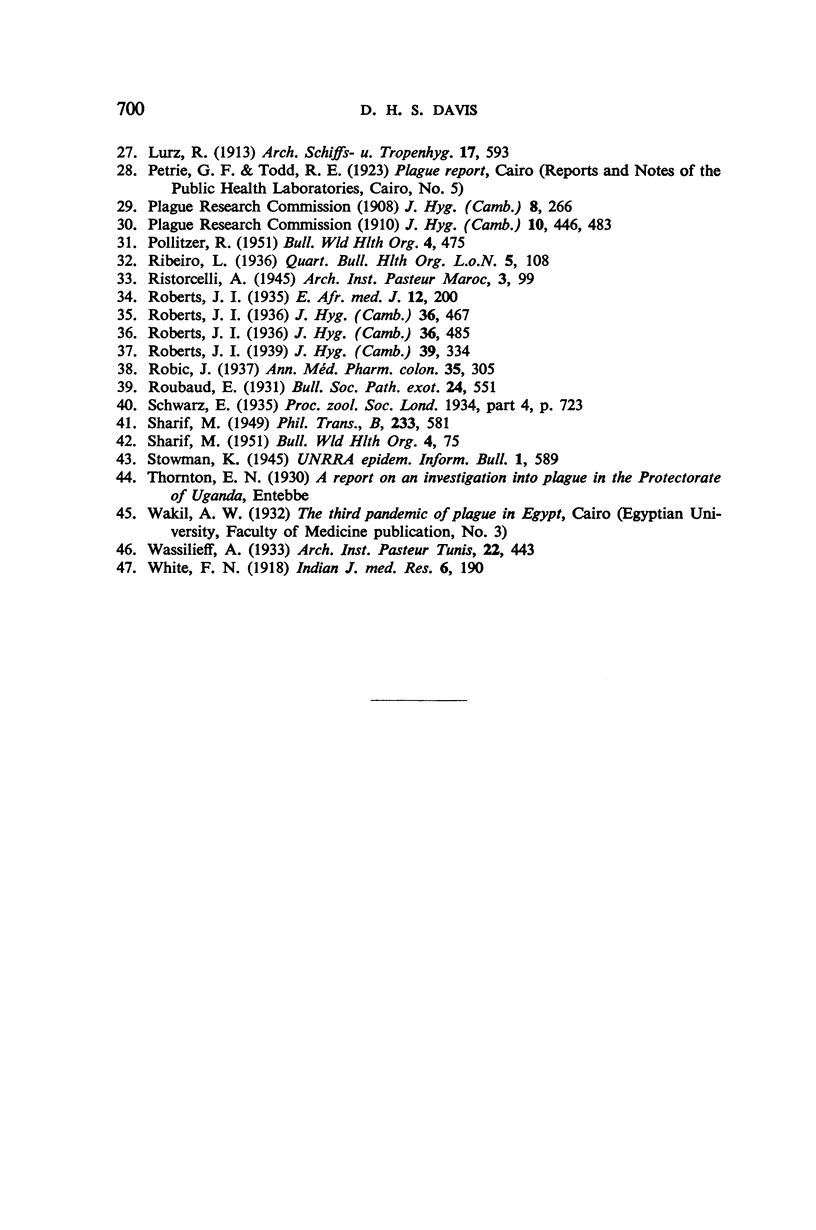
Selected References
These references are in PubMed. This may not be the complete list of references from this article.
- DEVIGNAT R. Epidémiologie de la peste au Lac Albert, 1944-46. Ann Soc Belg Med Trop (1920) 1949;29(3):277–305. [PubMed] [Google Scholar]
- DEVIGNAT R. Variétés de l'espèce Pasteurella pestis; nouvelle hypothèse. Bull World Health Organ. 1951;4(2):247–263. [PMC free article] [PubMed] [Google Scholar]
- HEISCH R. B. Wild-rodent plague in Kenya. Trans R Soc Trop Med Hyg. 1952 Sep;46(5):547–549. doi: 10.1016/0035-9203(52)90047-3. [DOI] [PubMed] [Google Scholar]
- POLLITZER R. Plague studies. 1. A summary of the history and survey of the present distribution of the disease. Bull World Health Organ. 1951;4(4):475–533. [PMC free article] [PubMed] [Google Scholar]
- SHARIF M. Spread of plague in the southern and central divisions of Bombay Province and plague endemic centers in the Indo-Pakistan subcontinent. Bull World Health Organ. 1951;4(1):75–109. [PMC free article] [PubMed] [Google Scholar]


